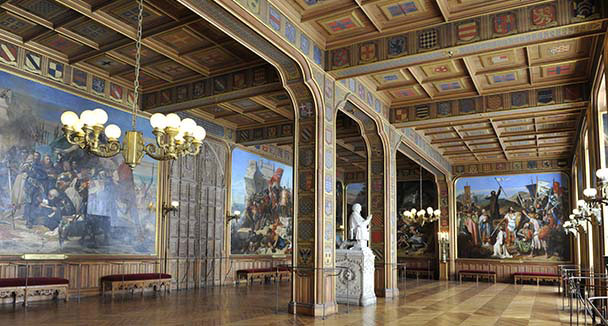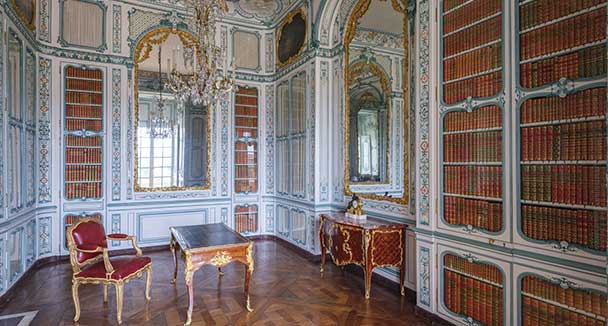Don't miss...
The Palace of Versailles, which has been on UNESCO’s World Heritage List for 30 years, is one of the most beautiful achievements of 18th-century French art.
Discover the Hall of Mirrors, the Royal Chapel, the King and Queen's Grand Apartments...
Don't miss…
On the garden level, the History Gallery gives an introduction to the tour of the Palace by going over the different stages in its construction. It then leads you into the Grand Apartments.
You can also explore the apartments of the Dauphin and the Dauphine, the apartements of Mesdames, Louis XV's daughters, which have been restored to their 18th-century splendour.
Don't miss…
The Palace of Versailles, which has been on UNESCO’s World Heritage List for 30 years, is one of the most beautiful achievements of 17th-century French art.
Discover the Hall of Mirrors, the Royal Chapel, the King and Queen's Grand Apartments...
Don’t miss
The Palace of Versailles, which has been on UNESCO’s World Heritage List for 30 years, is one of the most beautiful achievements of 18th-century French art.
Discover the Hall of Mirrors, the Royal Chapel, the King and Queen's Grand Apartments...
Marble Courtyard
The Marble Courtyard is the original courtyard of the palace, built by Louis XIII in 1623. Its black and white tiles come from the castle of Vaux-le-Vicomte.
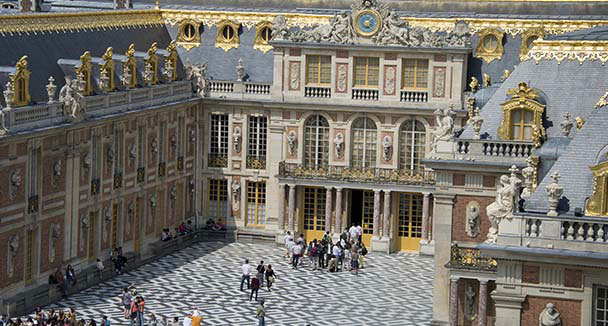
Room 1809-1811
This room focuses on the years 1809 to 1811.
Here you can find the Mariage de l’empereur Napoléon et de Marie Louise, archiduchesse d’Autriche (1835), by Gorges Rouget, and Combat d'Hollabrunn (1836) by Hippolyte Lecomte.
This room is accessible as part of a guided tour.
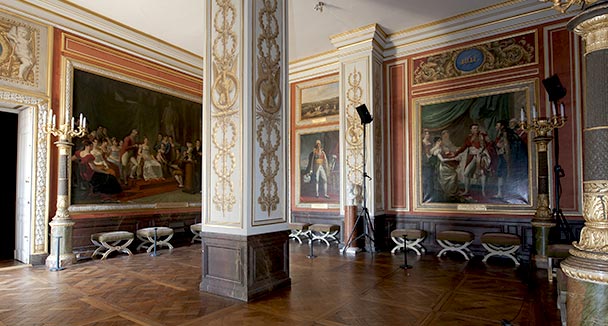
Room 1807-1808
This room is focused on the years 1807 to 1808.
In this room you can find the Mariage de Jérôme Bonaparte et de Catherine de Wurtemberg (1810), by Jean-Baptiste Regnault, and Napoléon blessé devant Ratisbonne (1810), by Pierre Gautherot.
This room is accessible as part of a guided tour.
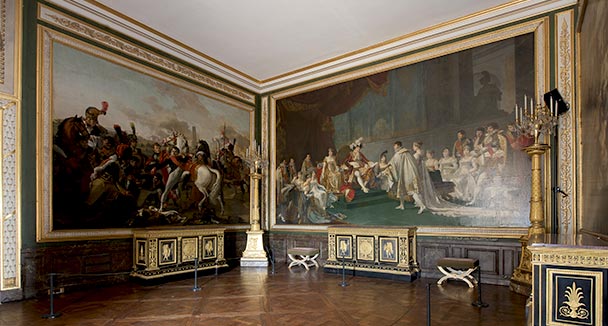
Room 1807: Spanish War
This room is dedicated to the Peninsular War.
In this room you can find Napoléon devant Madrid (1810), by Horace Vernet, or the Capitulation de Madrid (1810), by baron Antoine-Jean Gros.
This room is accessible as part of a guided tour.
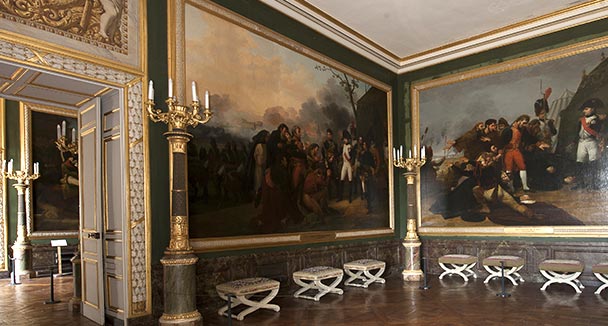
Room 1805-1807 Prussian Campaign
This room is dedicated to the Prussian campaign.
This is where you can find Napoléon reçoit la reine de Prusse à Tilsit (1837), by Nicolas Gosse, and Adieux de Napoléon et d’Alexandre après la paix de la Tilsit (1810), by Gioacchino Serangeli.
This room is accessible as part of a guided tour.
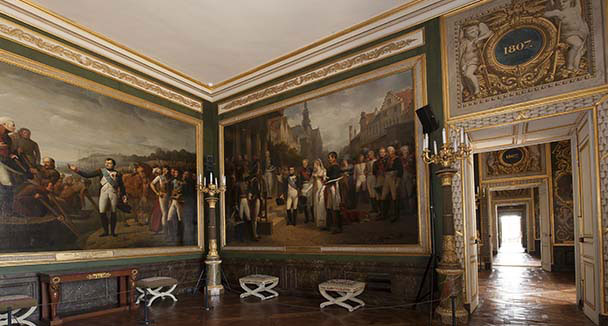
Room 1805: Prussian And Polish Campaigns
This room is dedicated to the Prussian and Polish campaigns.
In this room you can find Entrée de Napoléon à Berlin (1810), by Charles Meynier, and Napoléon sur le champ de bataille d’Eylau (1810) by Jean-Baptiste Mauzaisse.
This room is accessible as part of a guided tour.
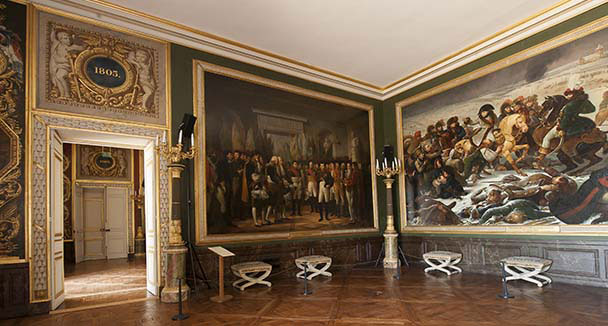
Room 1805: Austrian Campaign
This room is dedicated to the Austrian campaign.
This room is home to Napoléon donnant l'ordre avant la bataille d'Austerlitz (1808), by Carle Vernet, and Napoléon reçoit les clefs de Vienne à Schönbrunn (1808), by Anne Louis Girodet de Roucy Trioson.
This room is accessible as part of a guided tour.
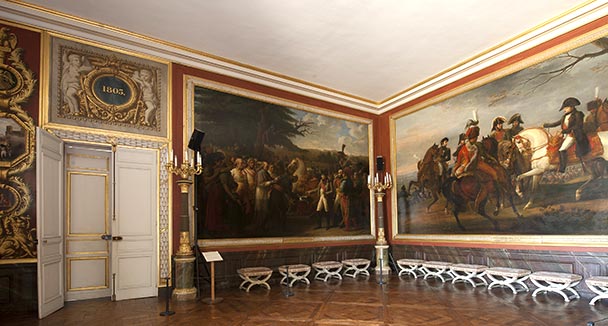
The 1805: German Campaign Room
This room is dedicated to the German campaign.
Here you can find Surprise du pont du Danube (first quarter of 19th century), by Guillaume Guillon, and Napoléon rend hommage au courage malheureux (1806), by Jean-Baptiste Debret.
This room is accessible as part of a guided tour.
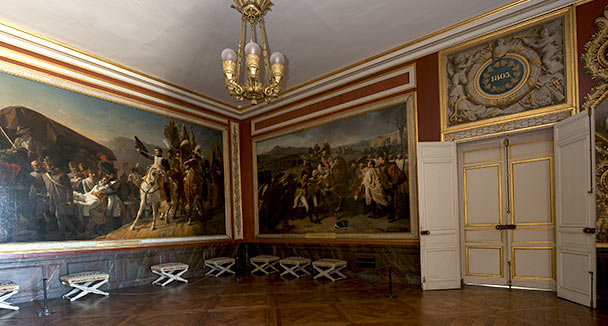
The 1804: Declaration Of The First French Empire Room
This room is dedicated to the proclamation of Empire.
This room houses Napoléon reçoit le Sénatus-Consulte qui le proclame empereur des Français, à Saint-Cloud (1836), by Georges Rouget, and Napoléon harangue le deuxième corps de la Grande-Armée sur le pont de Lech à Augsbourg, by Pierre Gautherot.
This room is accessible as part of a guided tour.
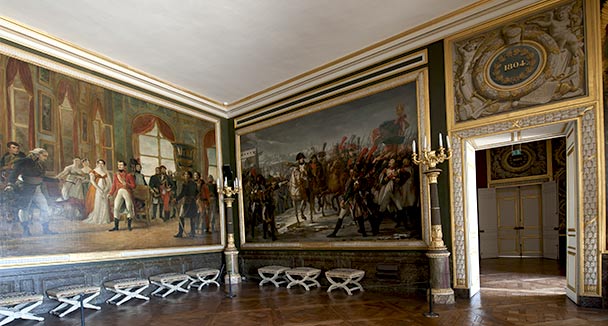
The 1802-1804: Consulate Room
This room is dedicated to the Consulate.
This room contains Le général Bonaparte au Conseil des Cinq-Cents, à Saint Cloud (1840), by François Bouchot, and Première distribution des croix de la légion d’honneur (1812), by Jean-Baptiste Debret.
This room is accessible as part of a guided tour.
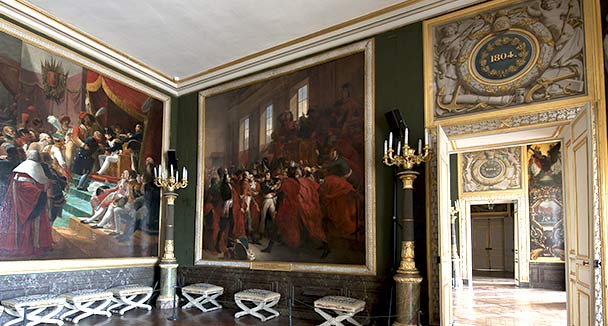
The 1798-1799: Egyptian Expedition Room
This room is dedicated to the Egyptian Expedition.
This room houses Bonaparte fait grâce aux révoltés du Caire (1808), by Pierre-Narcisse Guérin, and Kleber général en chef de l'armée d'Orient (1804), by Jean-Joseph Ansiaux.
This room is accessible as part of a guided tour.
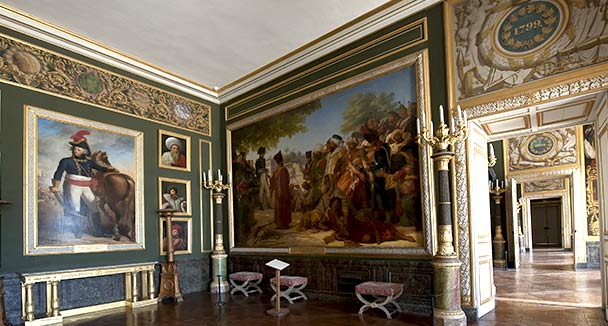
The 1797-1798: Italian And Egyptian Campaigns Room
This room is dedicated to the Italian and Egyptian campaigns.
This room contains Préliminaires de la paix signée à Léoben (1804), by Guillaume Guillon-Lethière, and Entrée du Général Bonaparte à Alexandrie (1812), by Guillaume-François Colson.
This room is accessible as part of a guided tour.
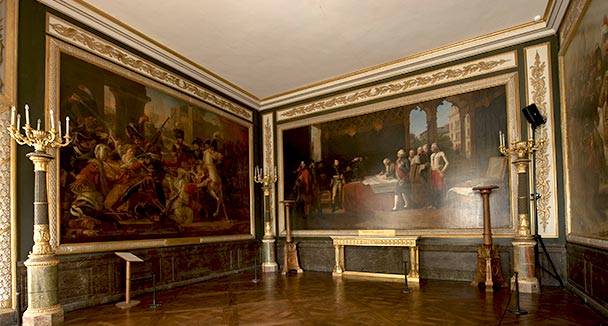
The 1796-1797 Room
This room is the first of the Empire rooms and the start of the talking museum, and it focuses on the years 1796 and 1797.
This room is home to Bataille de Neuwied (1835), by Victor Adam, and Bataille de Rivoli (1844), by Félix-Henri-Emmanuel Philippoteaux.
This room is accessible as part of a guided tour.
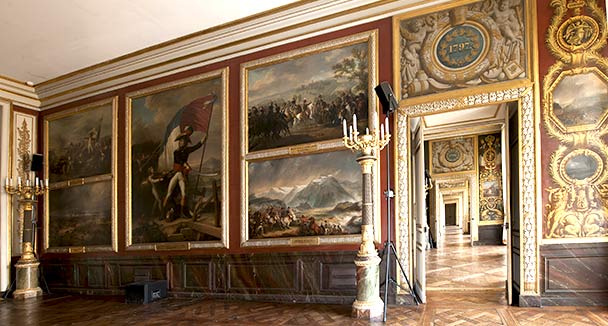
The Marengo Room
This room was originally an apartment for the Duchess of Bourbon. Louis-Philippe decided to dedicate the room to the 1800 campaign. In this room you can find Passage du Grand Saint-Bernard par l'armée française le 20 mai 1800 (1806), by Charles Thevenin, the Mort de Desaix à Marengo (third quarter of 19th century), and many other works.
This is the last room in the talking museum tour.
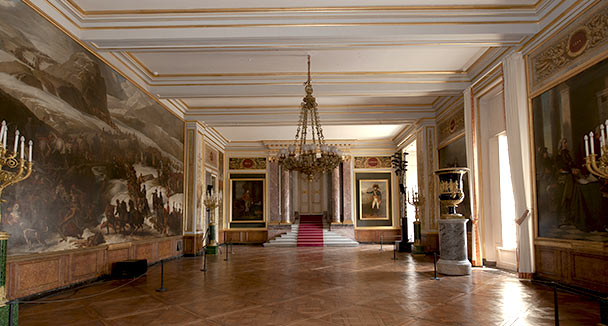
The Dauphine's First Antechamber
These apartments were always reserved to the leading members of the royal family. Their current decoration corresponds to the period in which they was occupied by Louis XV's son and his second wife, Maria Josepha of Saxony.

The Dauphine's Second Antechamber
These apartments were always reserved to the leading members of the royal family. Their current decoration corresponds to the period in which they was occupied by Louis XV's son and his second wife, Maria Josepha of Saxony.
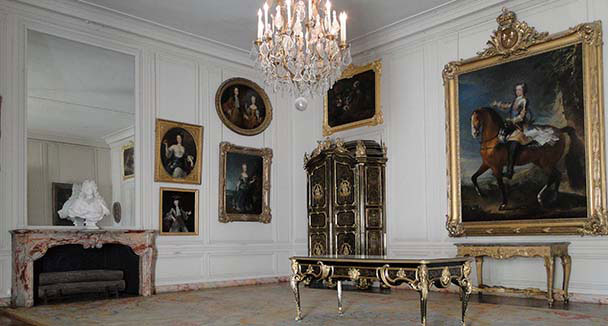
The Dauphine's Drawing Room
These apartments were always reserved to the leading members of the royal family. Their current decoration corresponds to the period in which they was occupied by Louis XV's son and his second wife, Maria Josepha of Saxony.

Apartment Of The Dauphin And The Dauphine
These apartments were always reserved to the leading members of the royal family. Their current decoration corresponds to the period in which they was occupied by Louis XV's son and his second wife, Maria Josepha of Saxony.
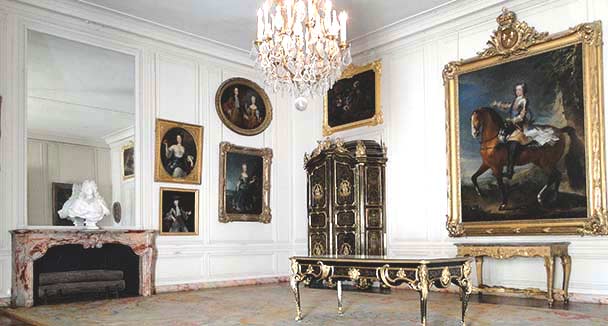
The Appartments Of Louis Xv’s Daughters
The Louis XV’s daughters apartments are symmetrical to the apartments of the Dauphin and Dauphine. Like them, they were turned into museum rooms by Louis-Philippe and recently restored to their state of princely apartments. Mesdames, as the six daughters of Louis XV were referred to, settled there in 1752, but only two of them, Adelaide and Victoire, lived there until the Revolution.

The Lower Gallery
Located just below the Hall of Mirrors, the Lower Hall gives access to the tour of the apartments of Mesdames, the daughters of Louis XV. In this lower gallery, you can admire in close detail those sculptures that were initially housed in the gardens but which have since had to be kept indoors.
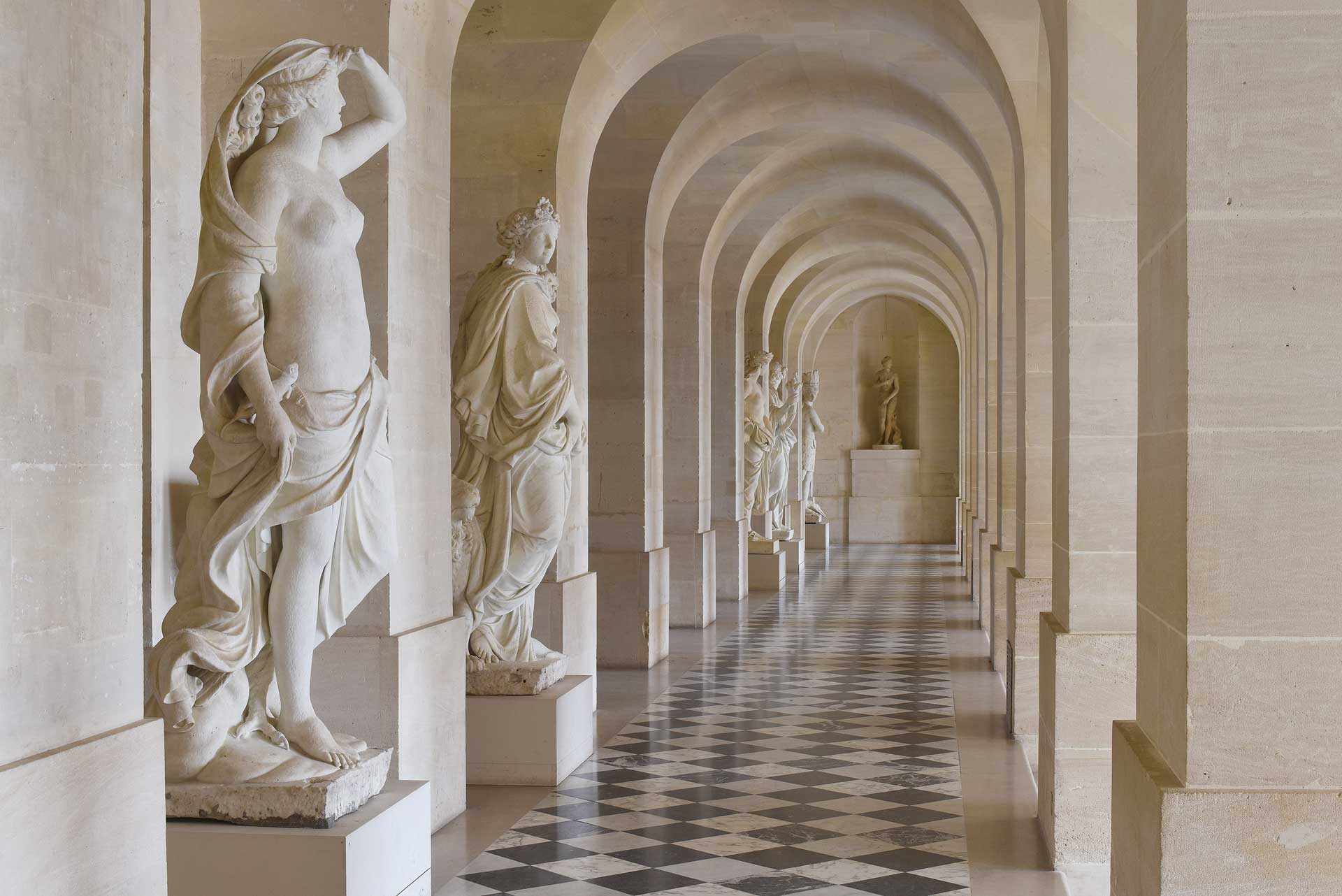
Madame Victoire's First Antechamber
The first room in the apartment, this antechamber was the most accessible and served as a waiting room for visitors. With little decoration, it was also used by domestic staff and was furnished with great simplicity: straw chairs, a wardrobe and a cot for a valet, hidden behind a screen.
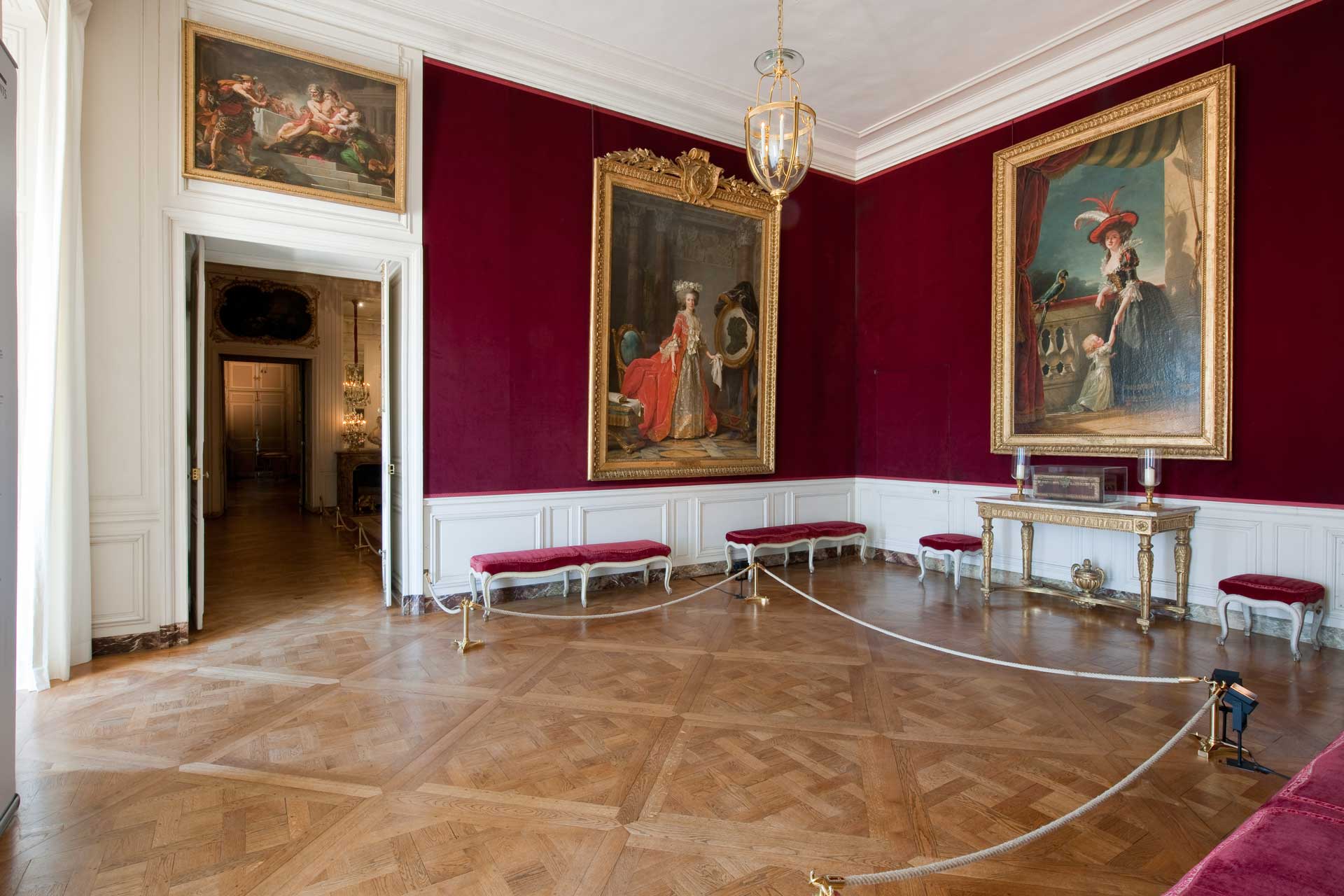
Madame Victoire's Second Antechamber
This room served for the official presentation of visitors, when a new person entered into the court, for example.
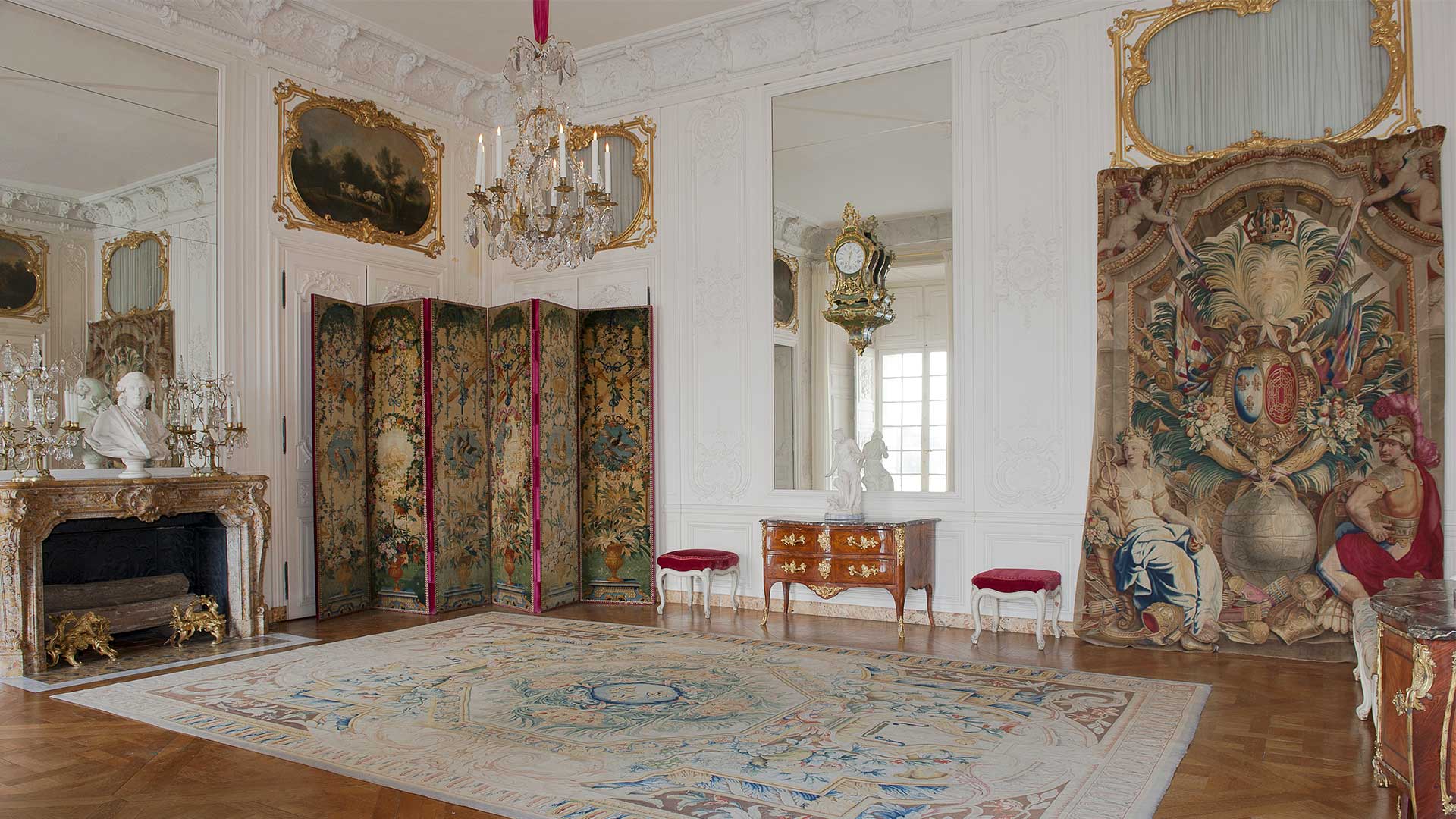
Madame Victoire's Large Chamber
This was originally the location for the octagonal room in Louis XIV's bath chamber. In 1763, the Mesdames demanded that the outmoded décor be replaced by a more elegant design, of which the cornice, the panelling in the angles of the room and the fireplace remain. Blanchet's harpsichord reminds us that Madame Victoire was an admirable player of the instrument, and that Mozart dedicated his first six harpsichord sonatas to her.
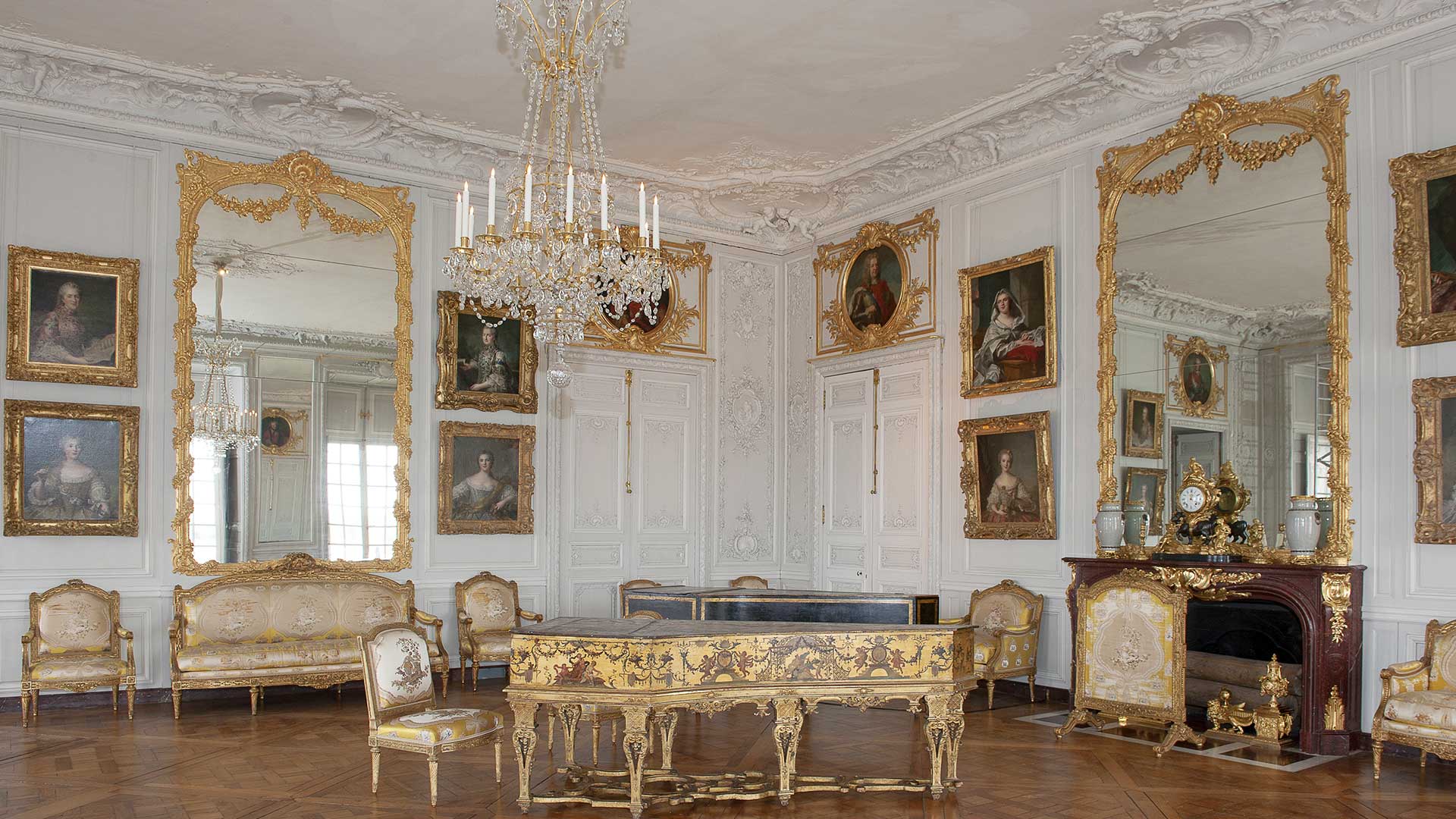
Madame Victoire's Bedchamber
In this room, a daily ceremonial would take place in front of a restricted audience, with each of the princess's courtesans playing their role: dressing, hair, jewellery.
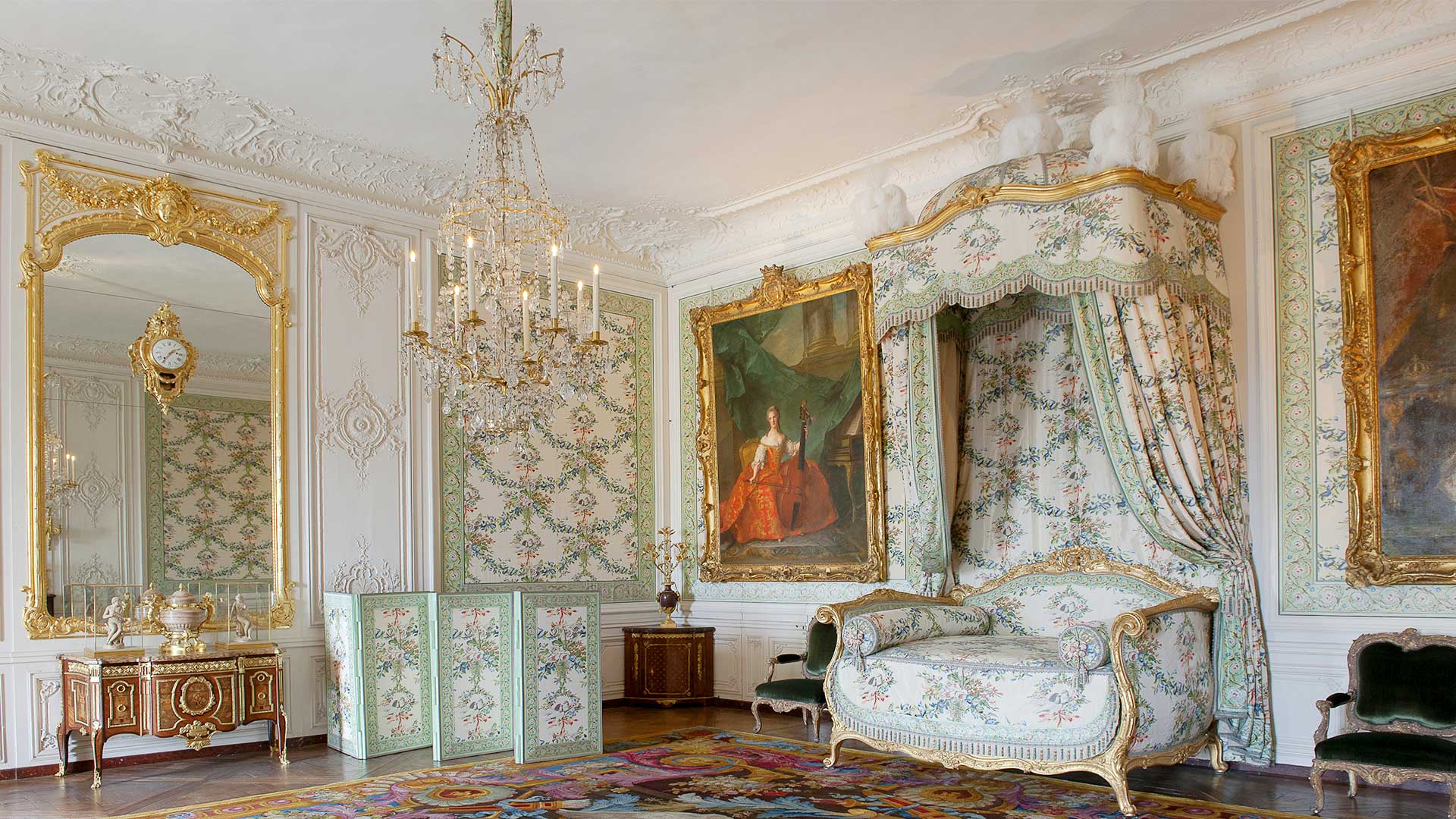
Madame Victoire's Interior Chamber
The interior chamber is the smallest of Madame Victoire's official apartments. It was also the only one that offered any real privacy. Entry was only allowed on the princess's express invitation. These days, the room houses furniture from the Mesdames' country residence in Bellevue, and a large flat desk designed by Jean-Henri Riesener for Marie-Antoinette.
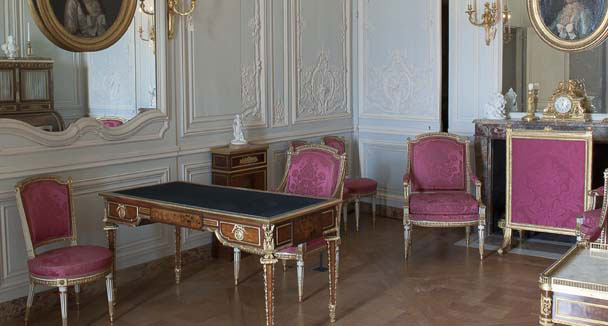
Library Of Madame Victoire
Louis XV's daughters liked to read here, either alone or with their 'lectrices'. They had libraries in each of their residences. It seems as if each library featured different coloured bindings: Green leather for Madame Victoire, red for Madame Adélaïde.
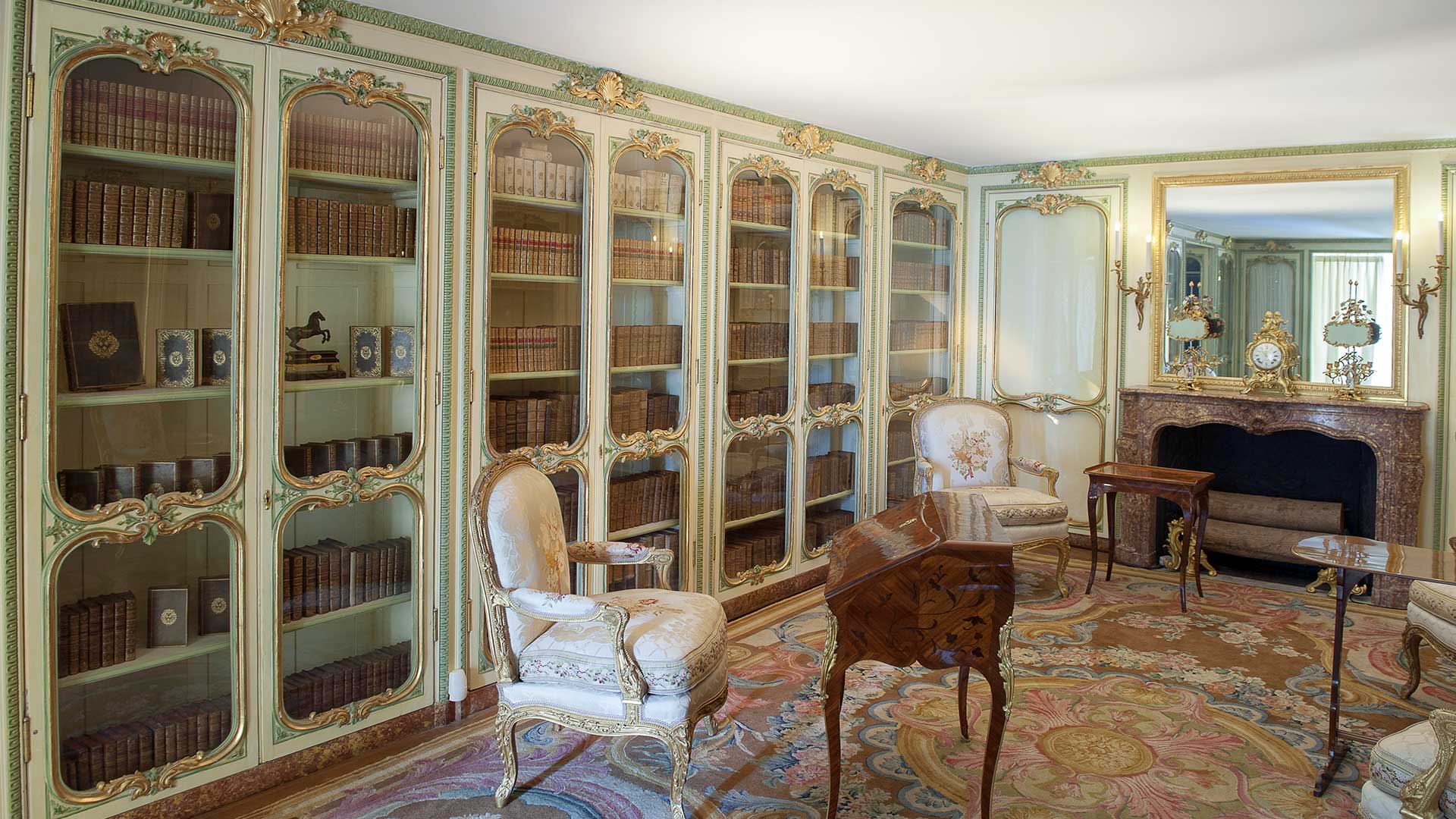
Interior Chamber Of Madame Adelaide
Access to Madame Adélaïde's apartment used to be different: through an antechamber at the other end. So the present tour is in reverse.
The room was famous in its day as the red lacquer room of Madame de Pompadour. Louis XV's mistress did indeed occupy what would become Madame Adélaïde's apartment; she died there in 1764. With its grandly refined furniture, the current arrangement of the room reflects the princess's personal taste.
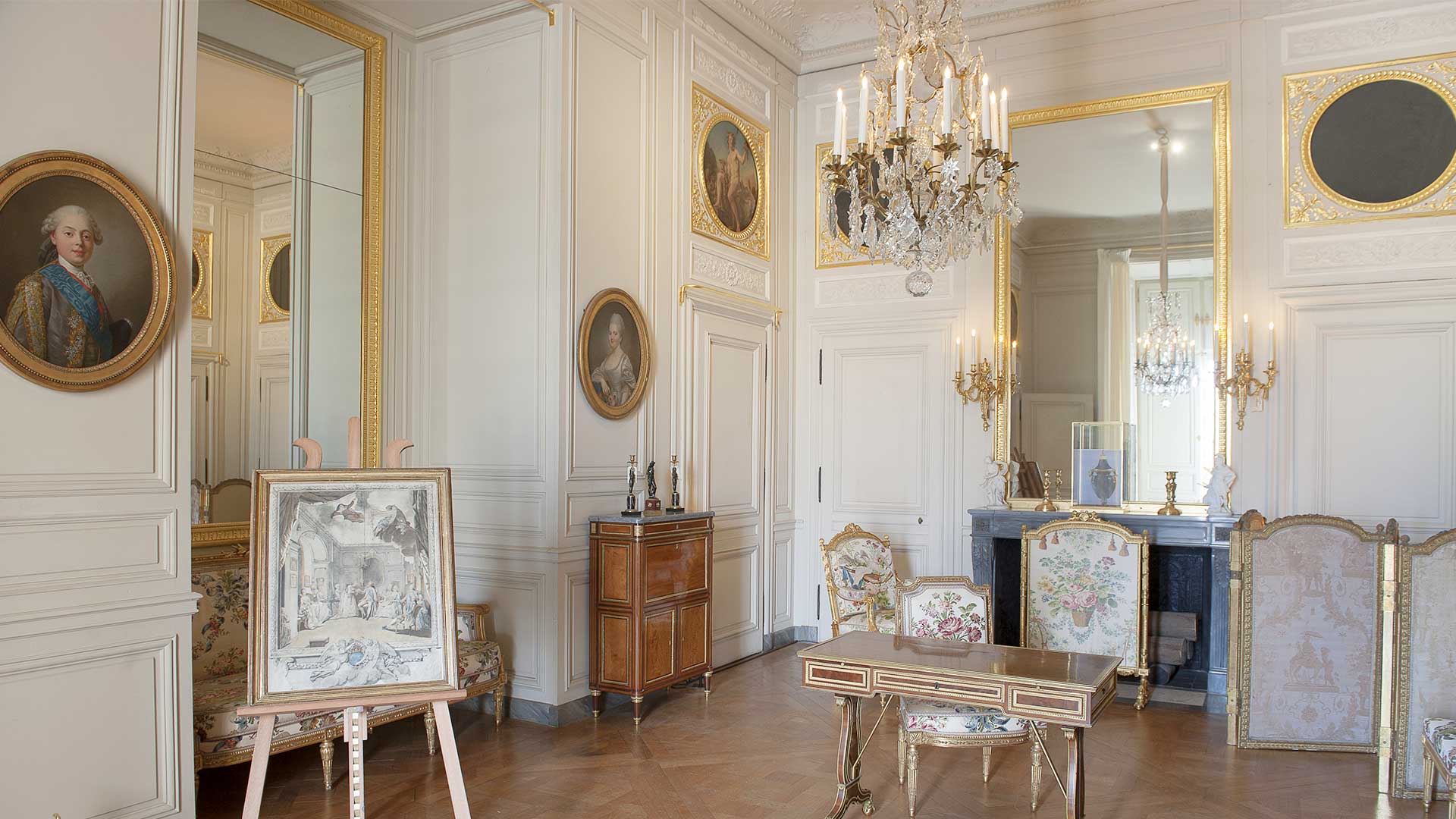
Madame Adelaide's Bedchamber
Madame Adélaïde's bedchamber is a very large room and richly decorated. In the time of Mesdames, there was both a summer and winter décor in the official apartments. Here you can see the summer materials restored.
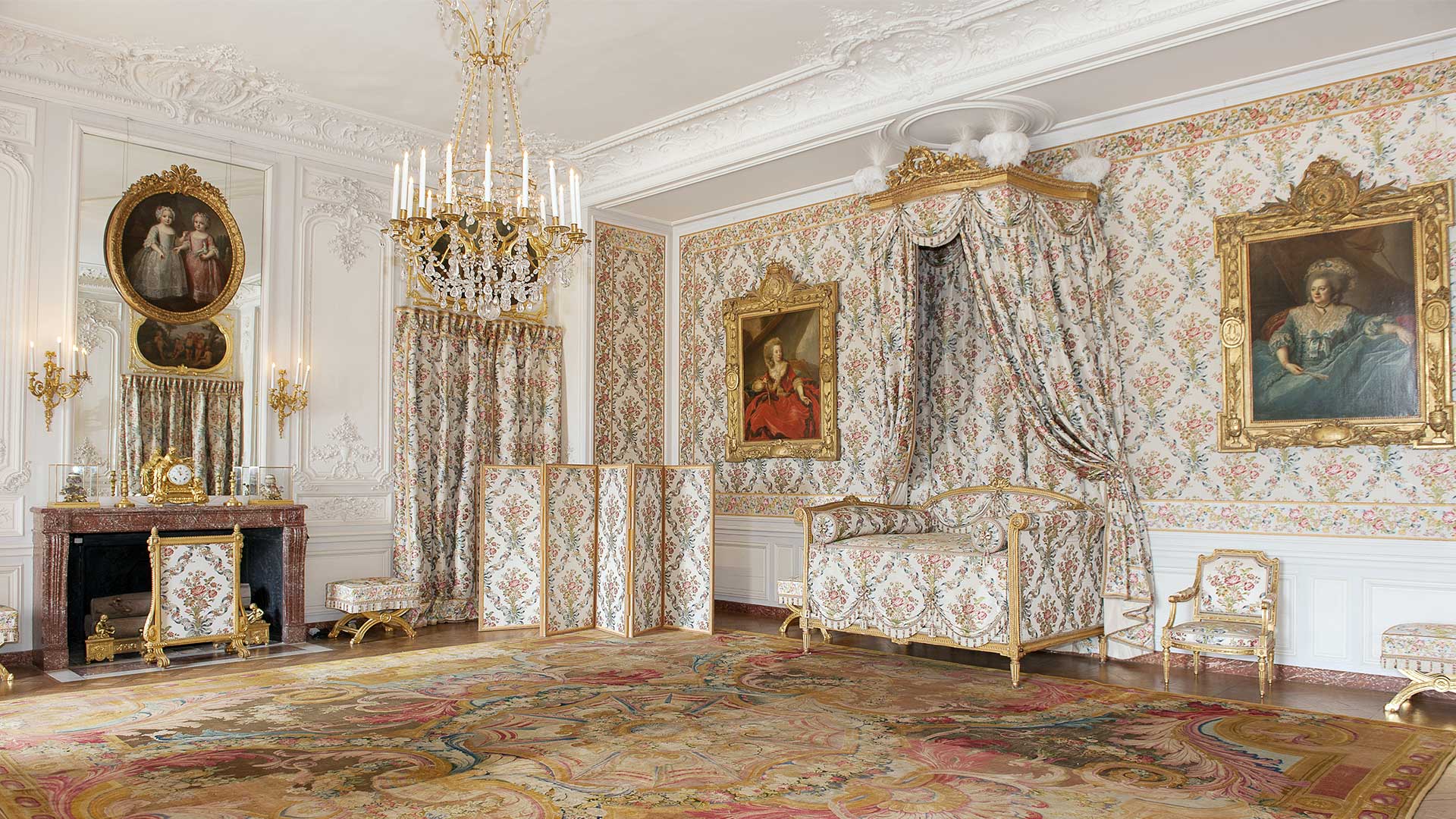
Madame Adelaide's Large Chamber
The main reception room in the princess's apartment, the large chamber functioned as a music room: The organ at the rear of the alcove possibly belonged to Madame Adélaïde. Music is also evoked in the large portraits of Madame Adélaïde practicing her vocal scales, by Jean-Marc Nattier (1759), and Madame Victoire playing the harp, by Etienne Aubry (1773).
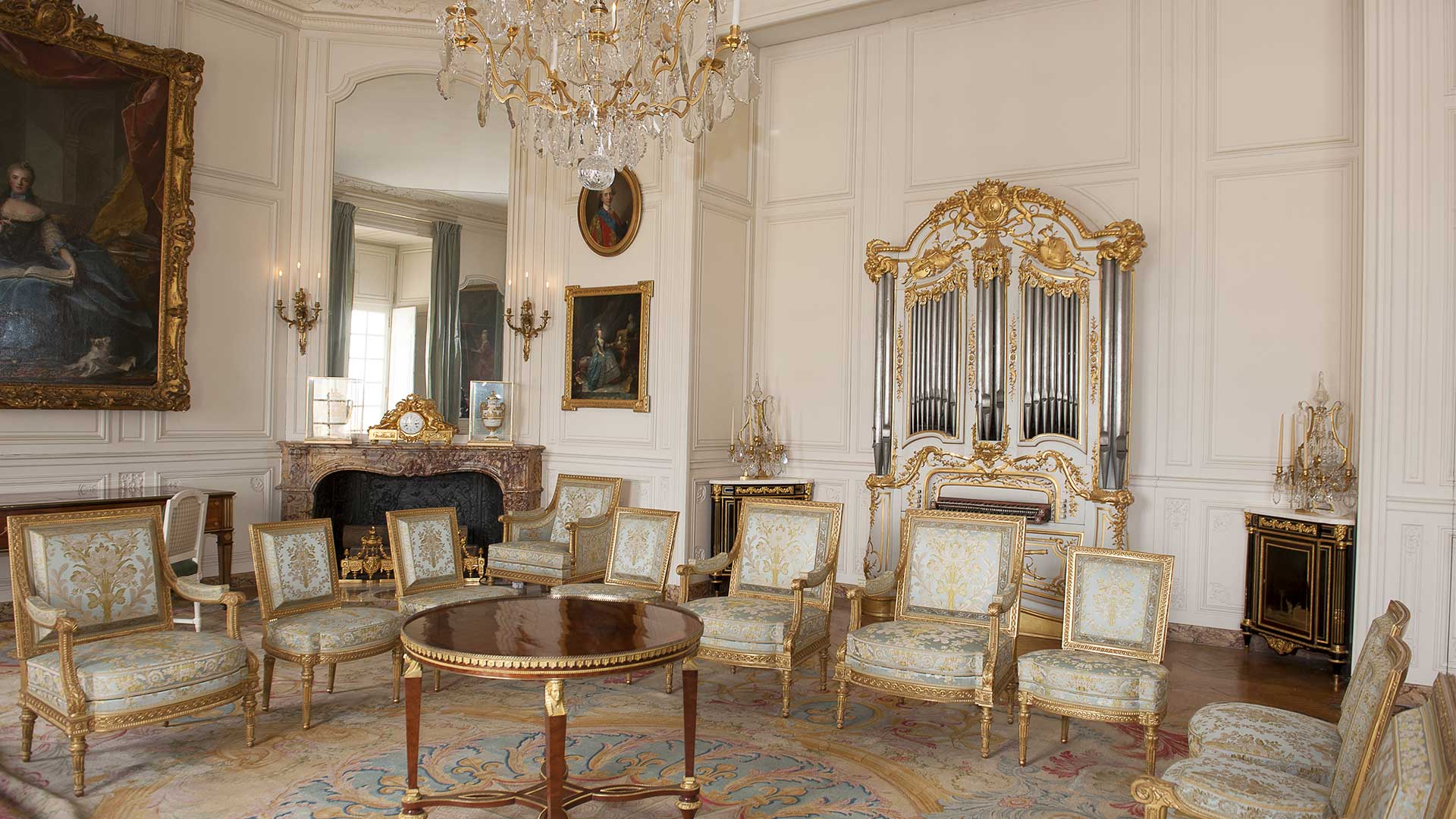
Hoquetons Salon
"Les gardes de la prévôté de l’Hôtel", the internal police force at the Palace, would meet in this room, which is the only room to have retained its décor from its inception in 1672. They were referred to as "Hoquetons", a reference to their tunics, inherited from the archers of the Middle Ages.
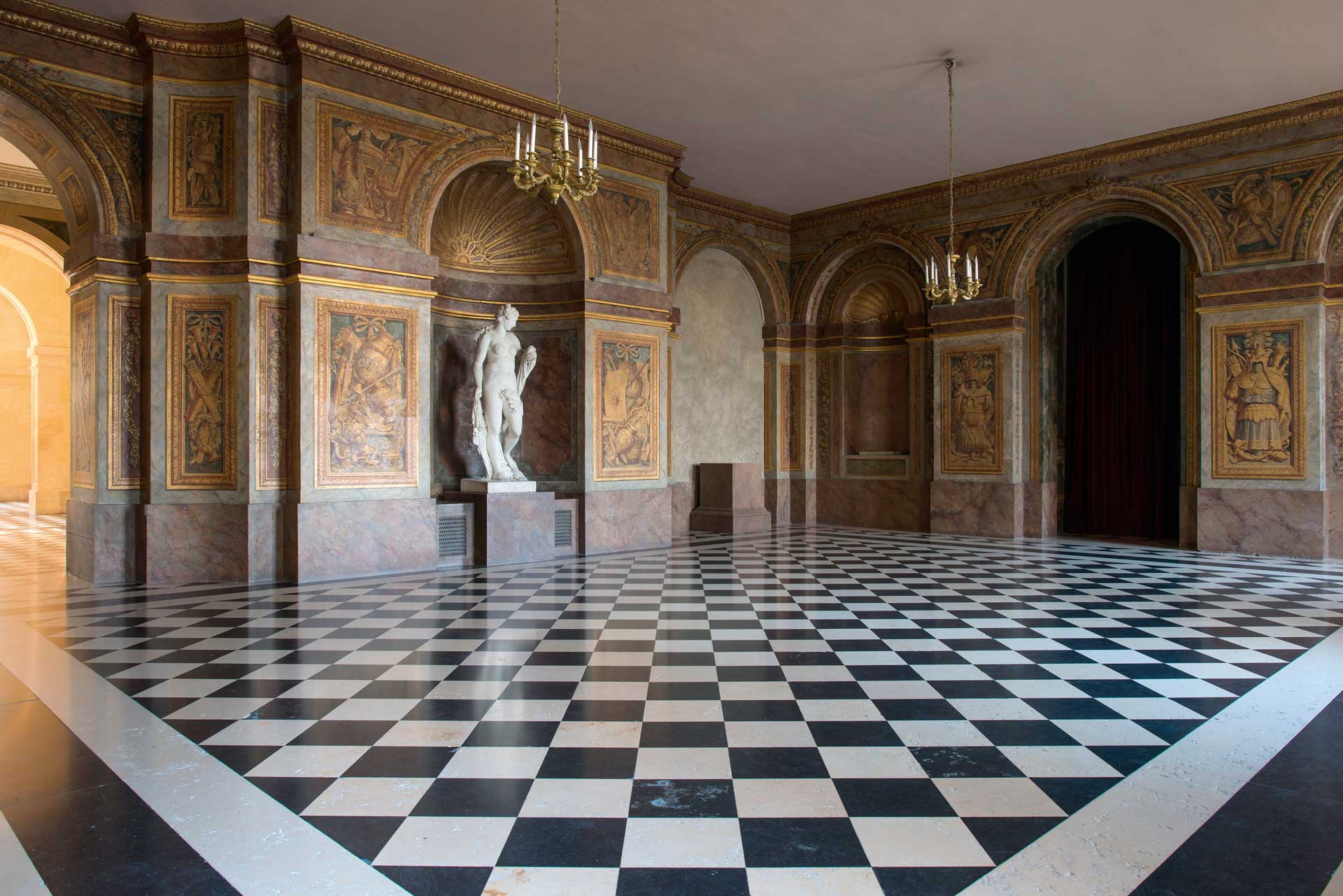
The Upper Vestibule Of The Chapel
The Royal Chapel was completed in 1710, towards the end of Louis XIV's reign. It is the fifth and final chapel to have been built at the Palace since the reign of Louis XIII.
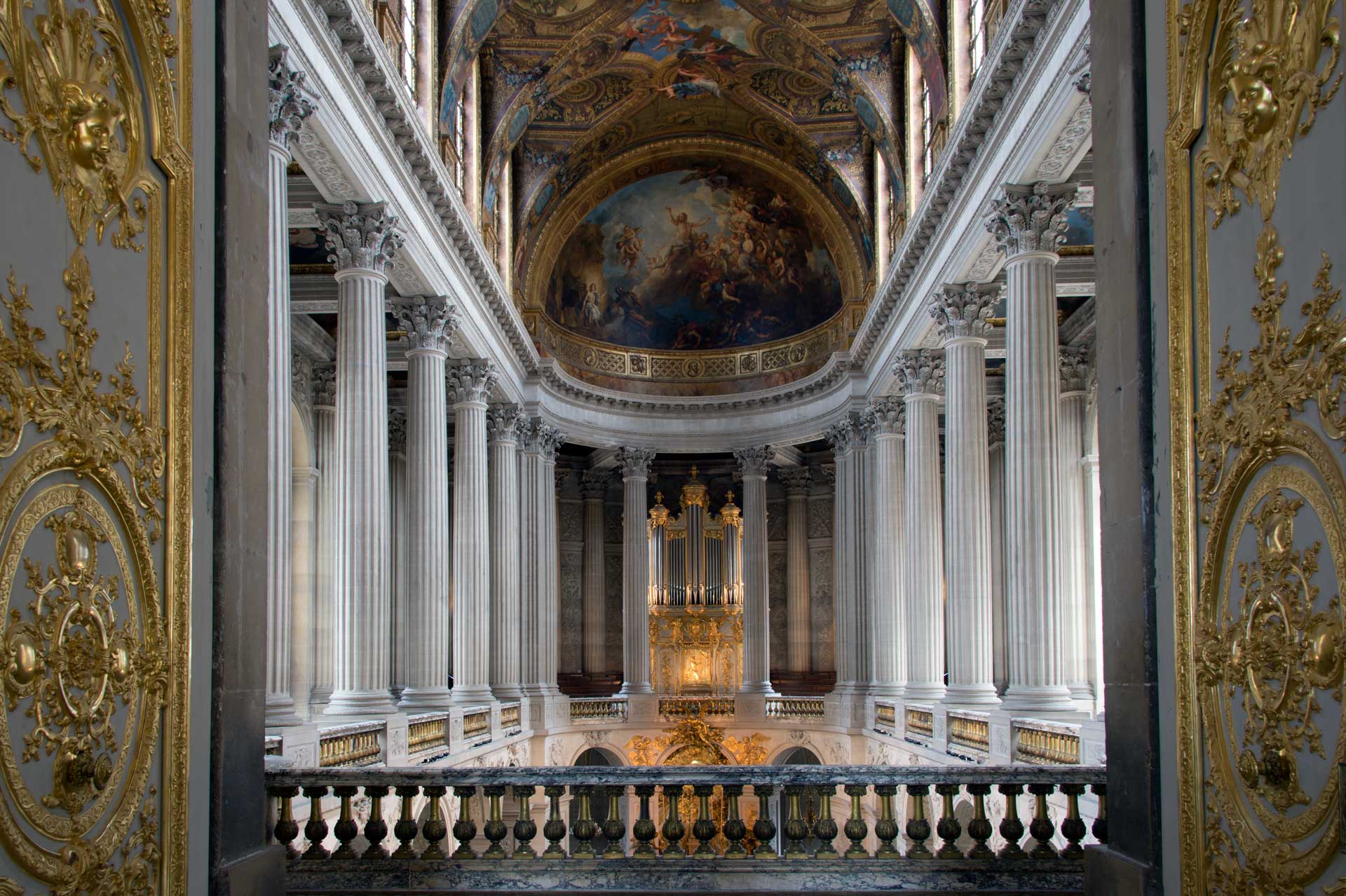
Grand Apartments (Hall Of Mirrors, King’s Chamber)
Visitors arrive at the Grand Apartments through the Gallery of the History of the Palace or the sculpture gallery. By taking this tour, visitors can explore the apartments of the King and Queen of France.
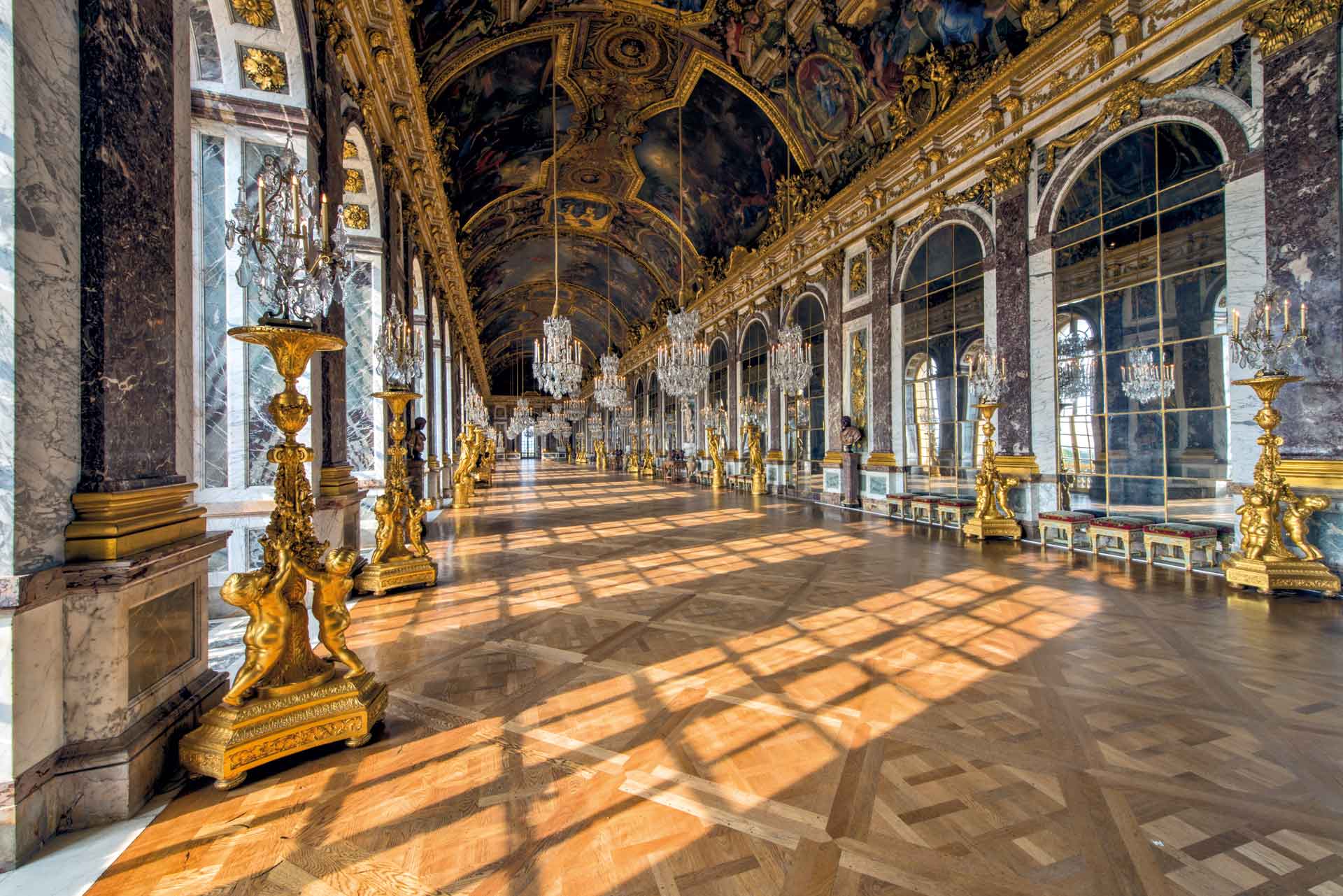
The Hercules Salon
The Hercules Room is the last room to have been created under the reign of Louis XIV. Its painted ceiling, which took three years to complete, is the most epic in the Palace of Versailles, featuring 142 different figures.
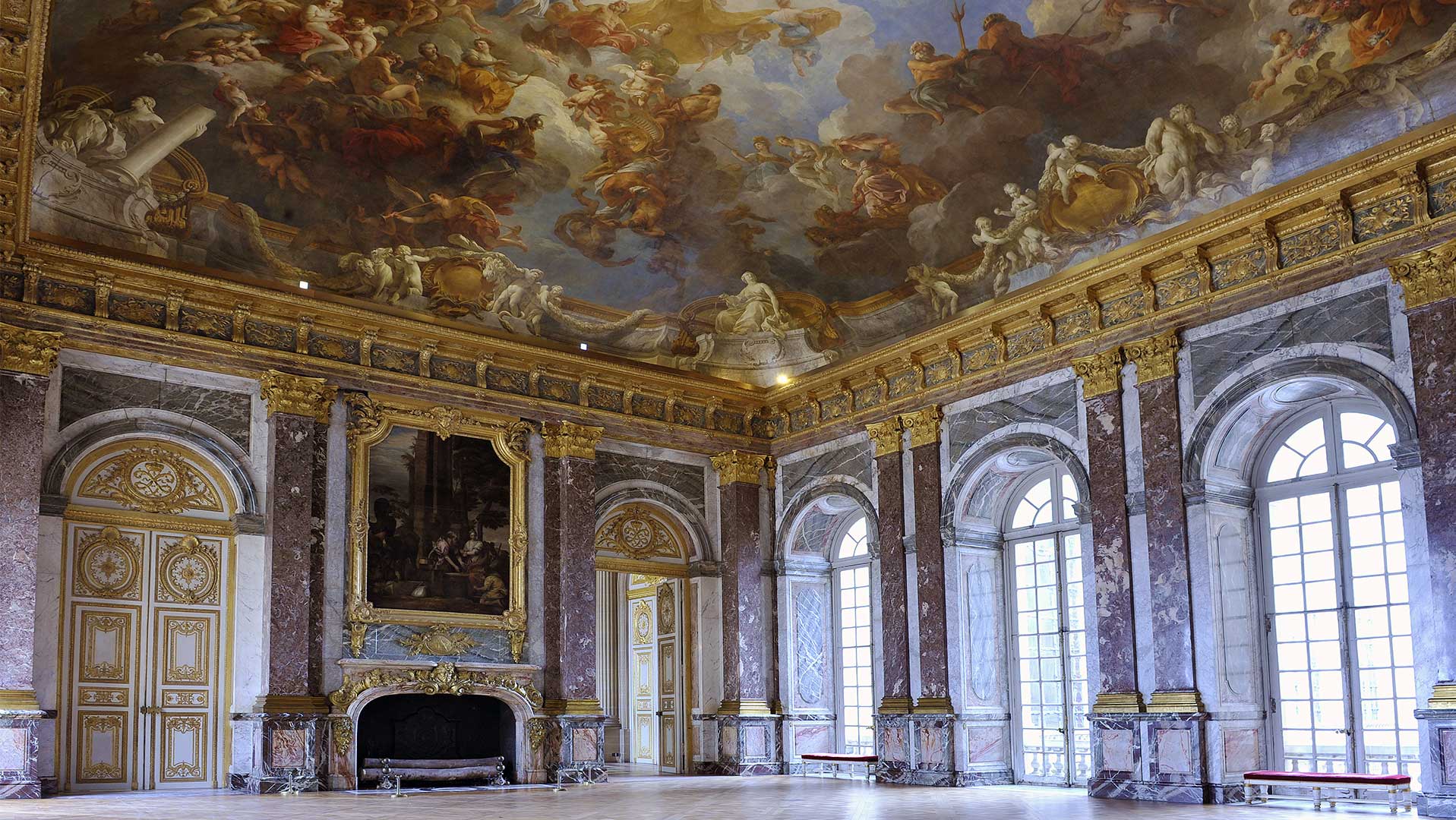
Venus Salon
Under Louis XIV, this room dedicated to the Roman goddess of love constituted the main entrance to the King's State Apartment. Accessed via the Ambassador's Staircase, which no longer exists, it functioned as a type of lobby. During evening gatherings at the apartment, the room was used as a reception, where refreshments were served.
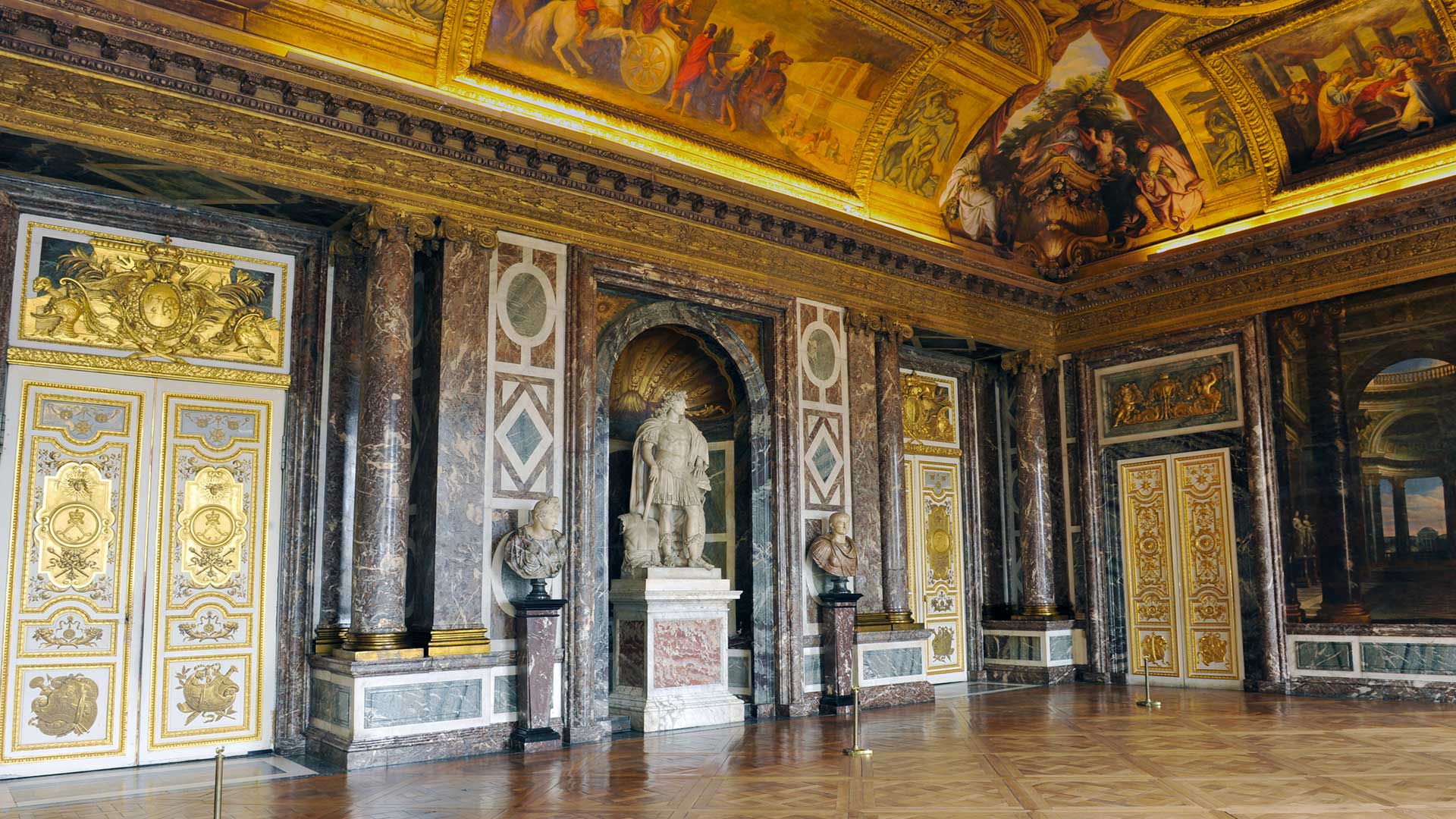
Diana Salon
Like the Venus Room, the Diana Room served as a lobby to the King's State Apartment under Louis XIV. During evening gatherings at the apartment, a billiard table and tiered seating were installed, so that the attendees could follow - without breaking the rules of etiquette - the games at which the king often excelled.
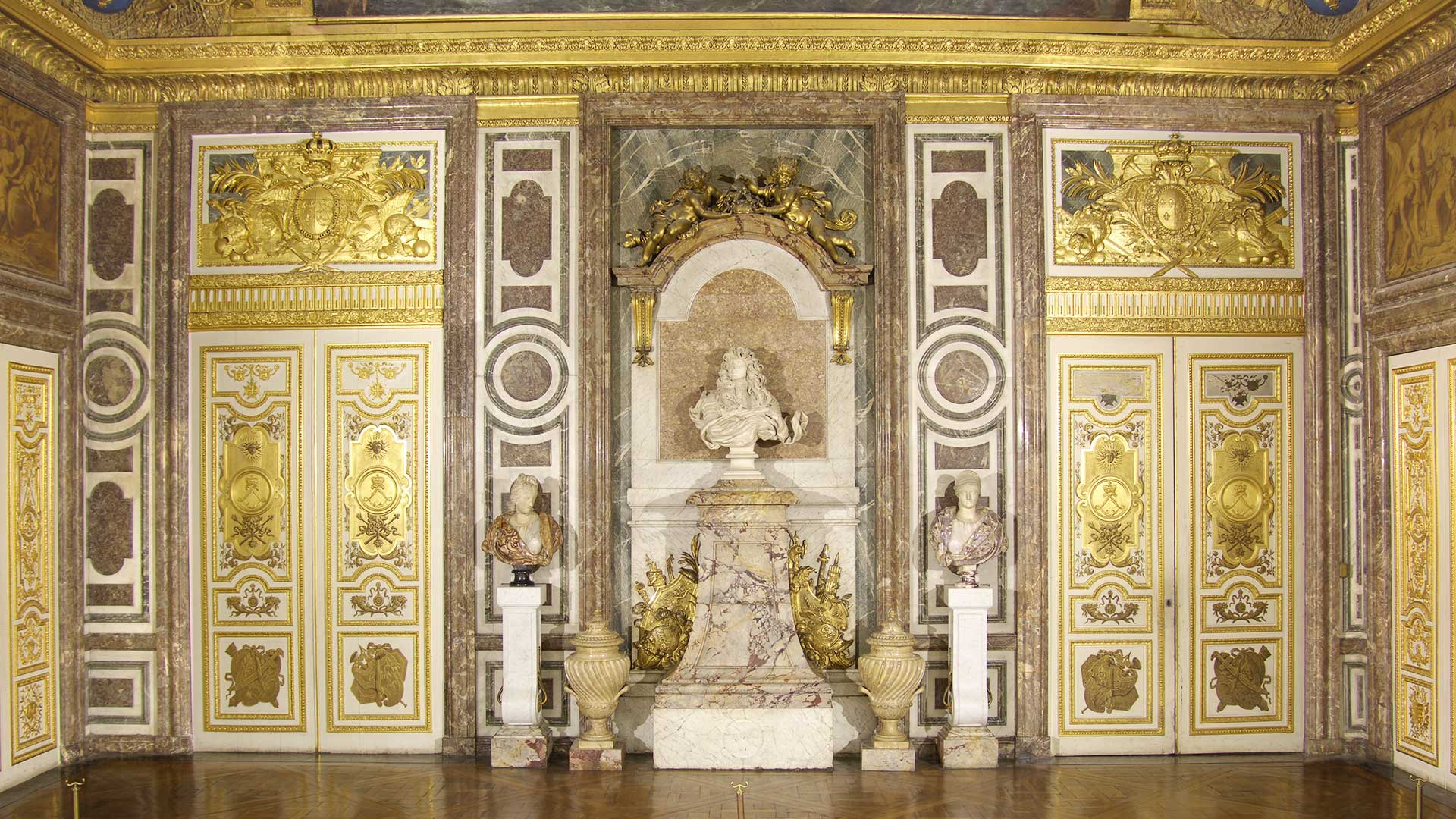
Mars Salon
In Louis XIV's time, the Mars Room marked the start of the King's apartment. It served as a guard room. The room's military function is underlined by the portrayal of Mars, the Roman god of war.
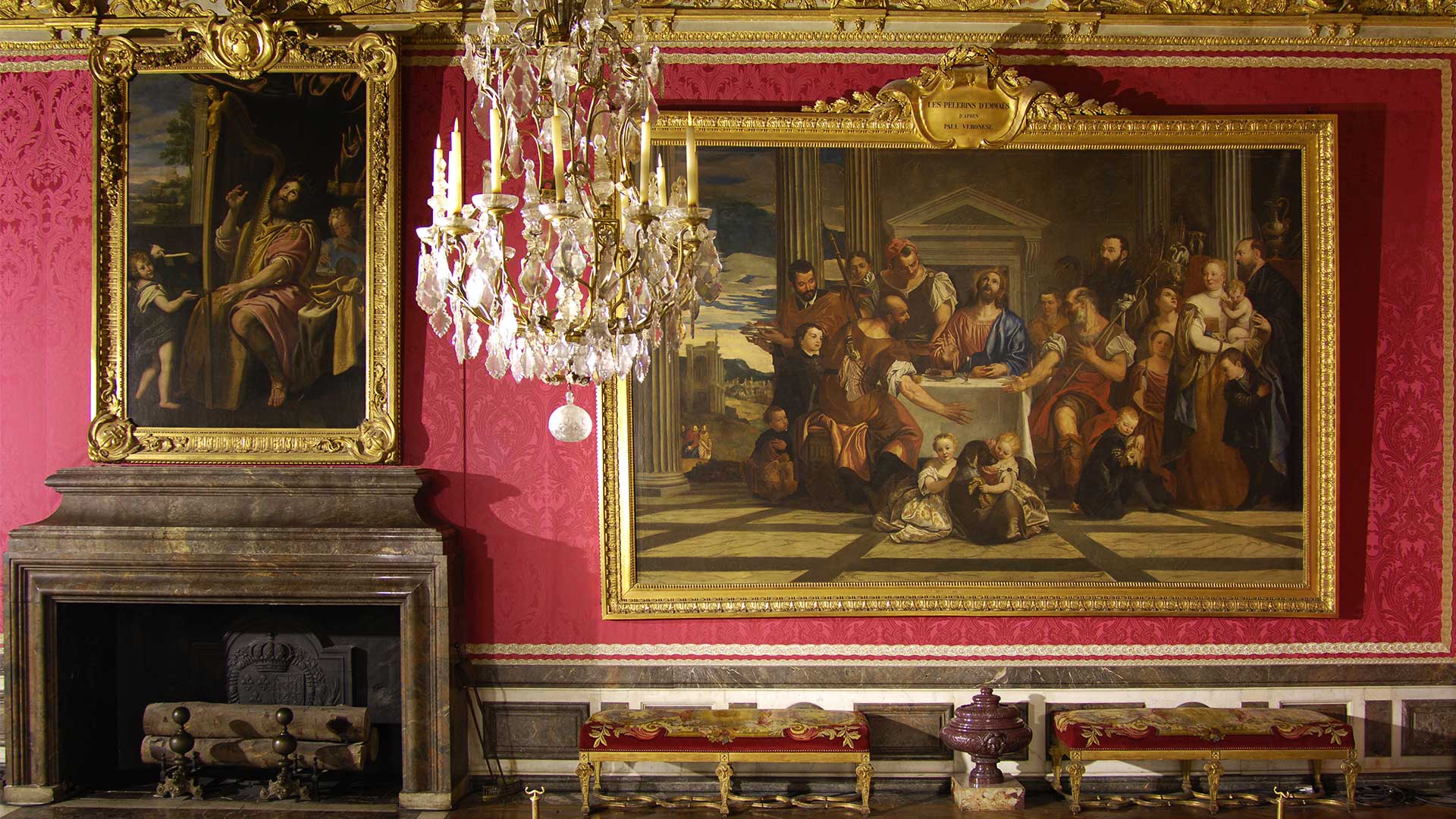
Mercury Salon
The Mercury Room functioned as a state room, because Louis XIV actually slept in his private apartments. That being said, up to 1701, the room hosted the King's getting-up and going-to-bed ceremonies, which were observed by the public.
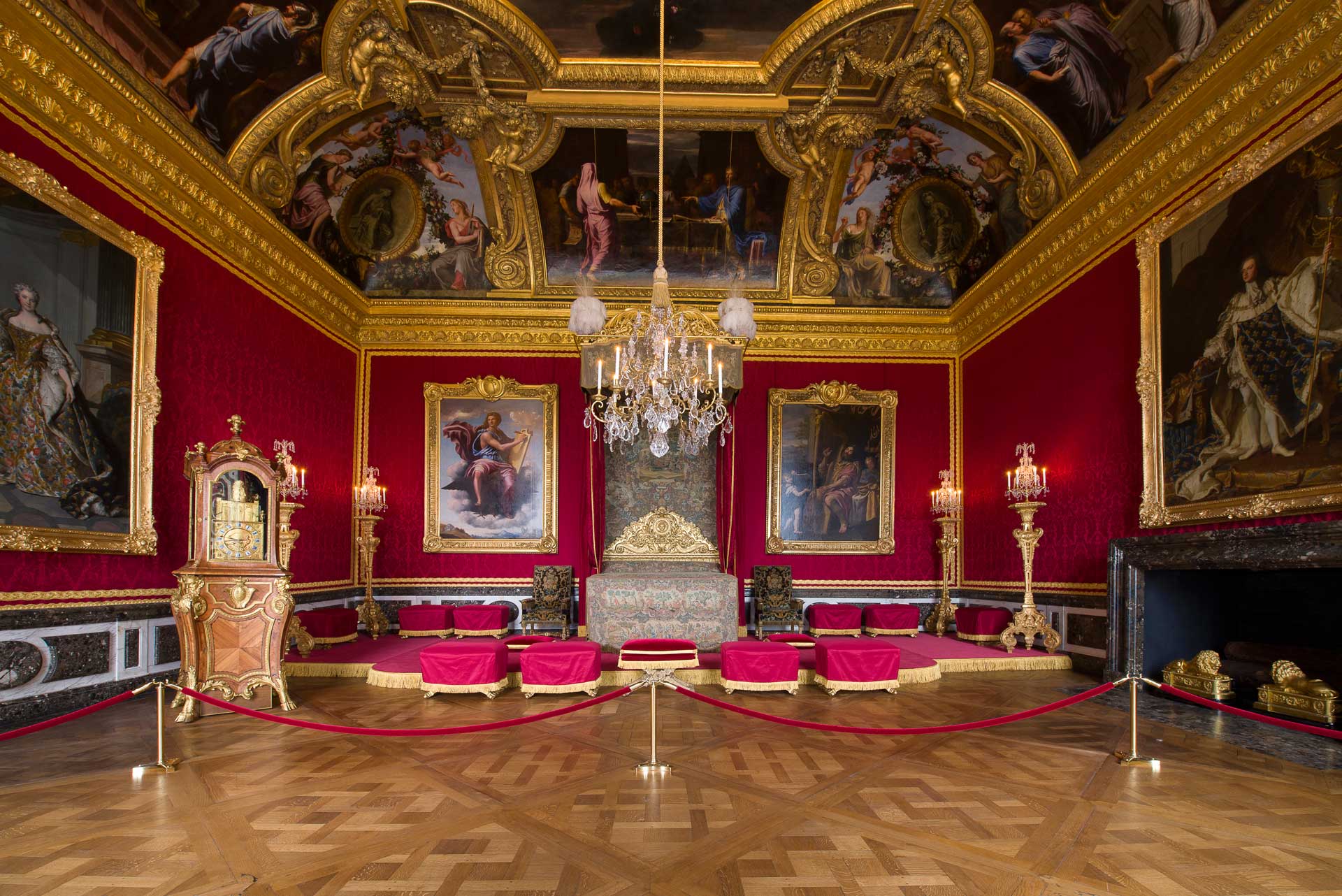
Apollo Salon
The Apollo room, dedicated to the Roman god of the sun, with whom Louis XIV identified, served as a throne room. Here is where the king would hold his regular audiences. During evening gatherings at the apartment, the room became a ballroom.
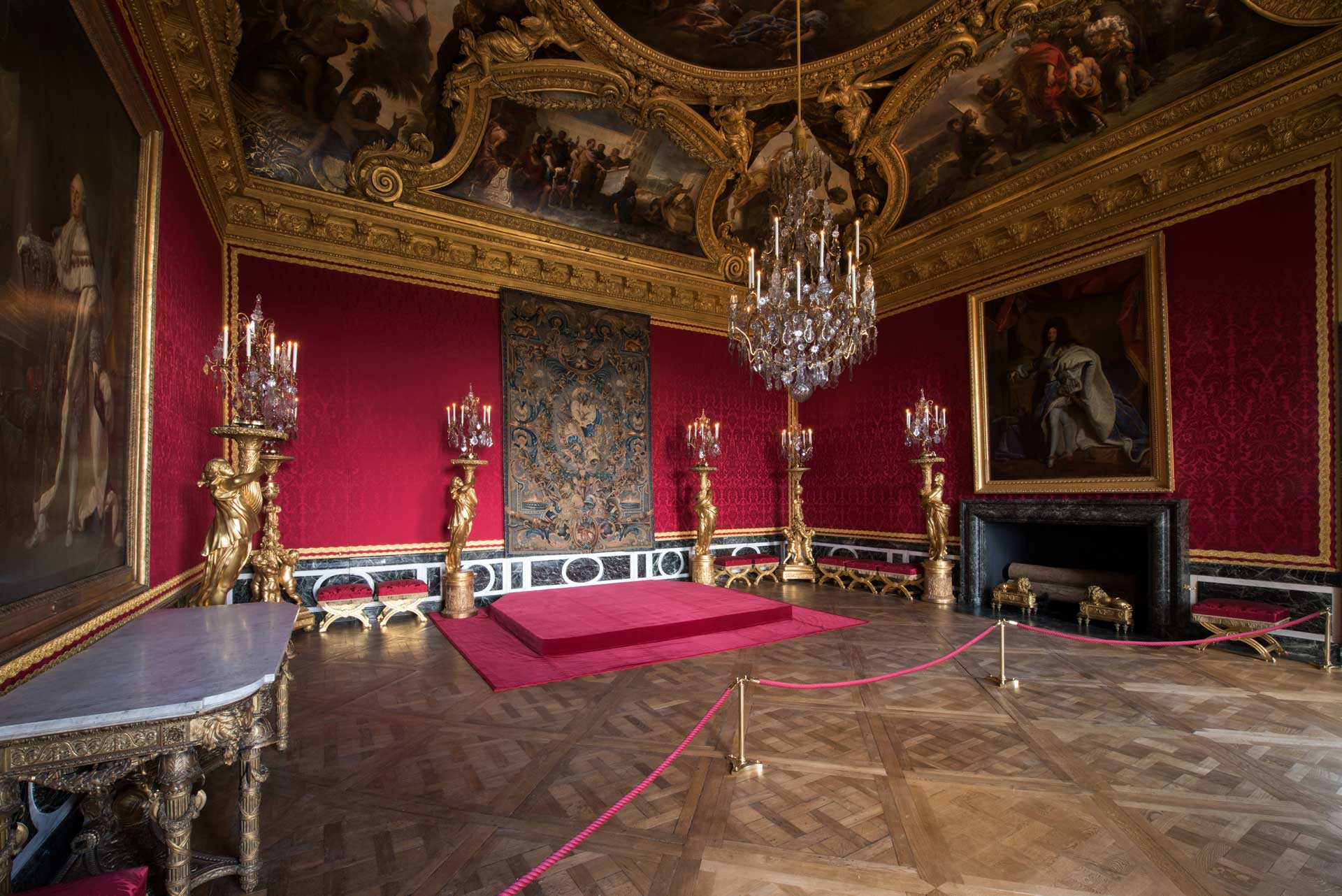
War Salon
The War Room depicts Louis XIV as a victorious king. It is immediately adjacent to the Hall of Mirrors and is a counterpart to the Peace Room, situated at the opposite end of the former.
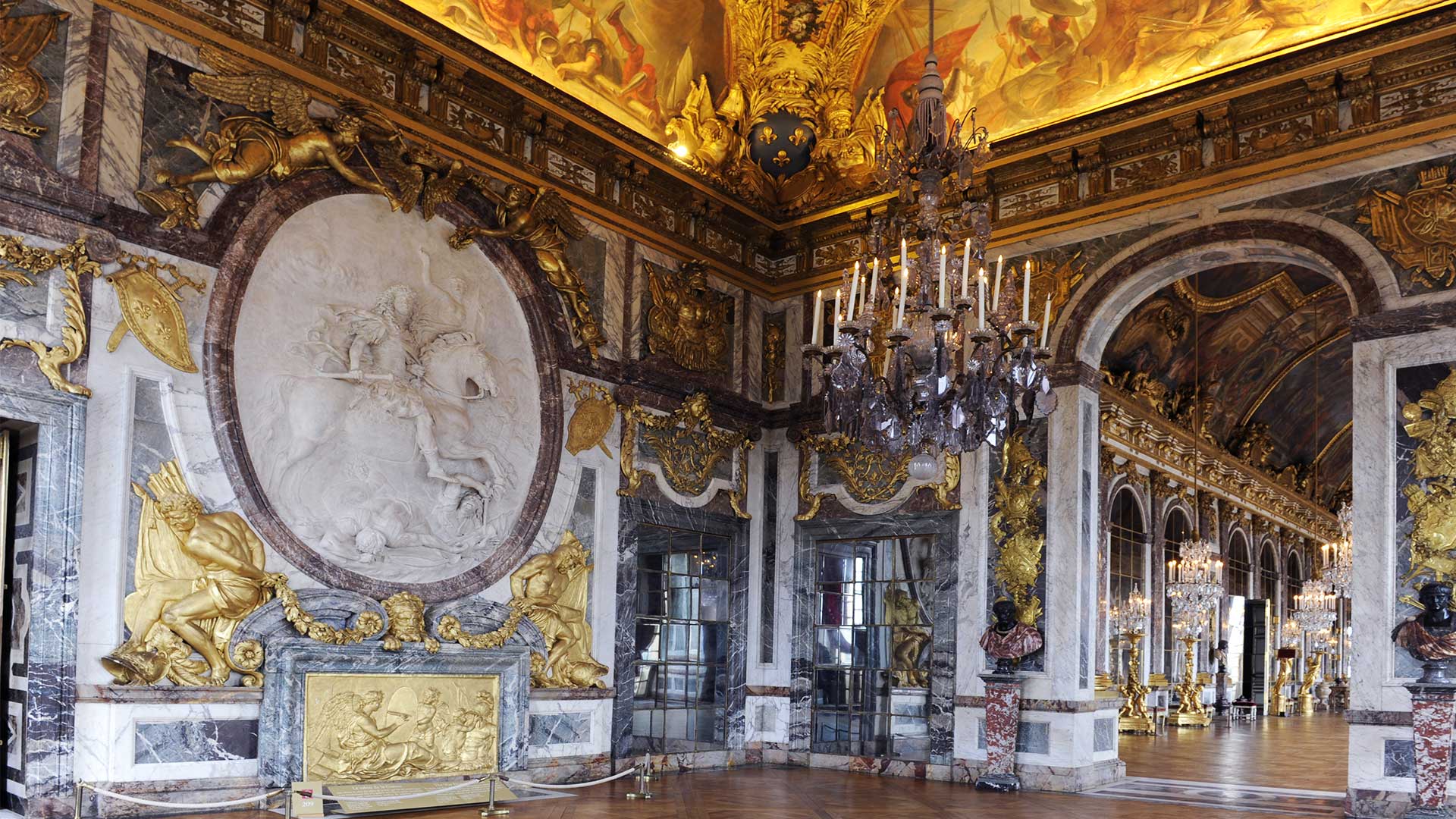
Hall Of Mirrors
The Hall of Mirrors replaced a large terrace overlooking the garden that was considered too exposed to inclement weather. Its seventeen arches decorated with mirrors face seventeen arched windows, creating a commingling of the interior and exterior. The Hall of Mirrors was a place for both social events and demonstrating the political might of Louis XIV.

Council Chamber
Here is where the major political decisions were made. The king would meet here with his ministers. It is also where he received certain audiences.
The room's décor dates from Louis XV's time.
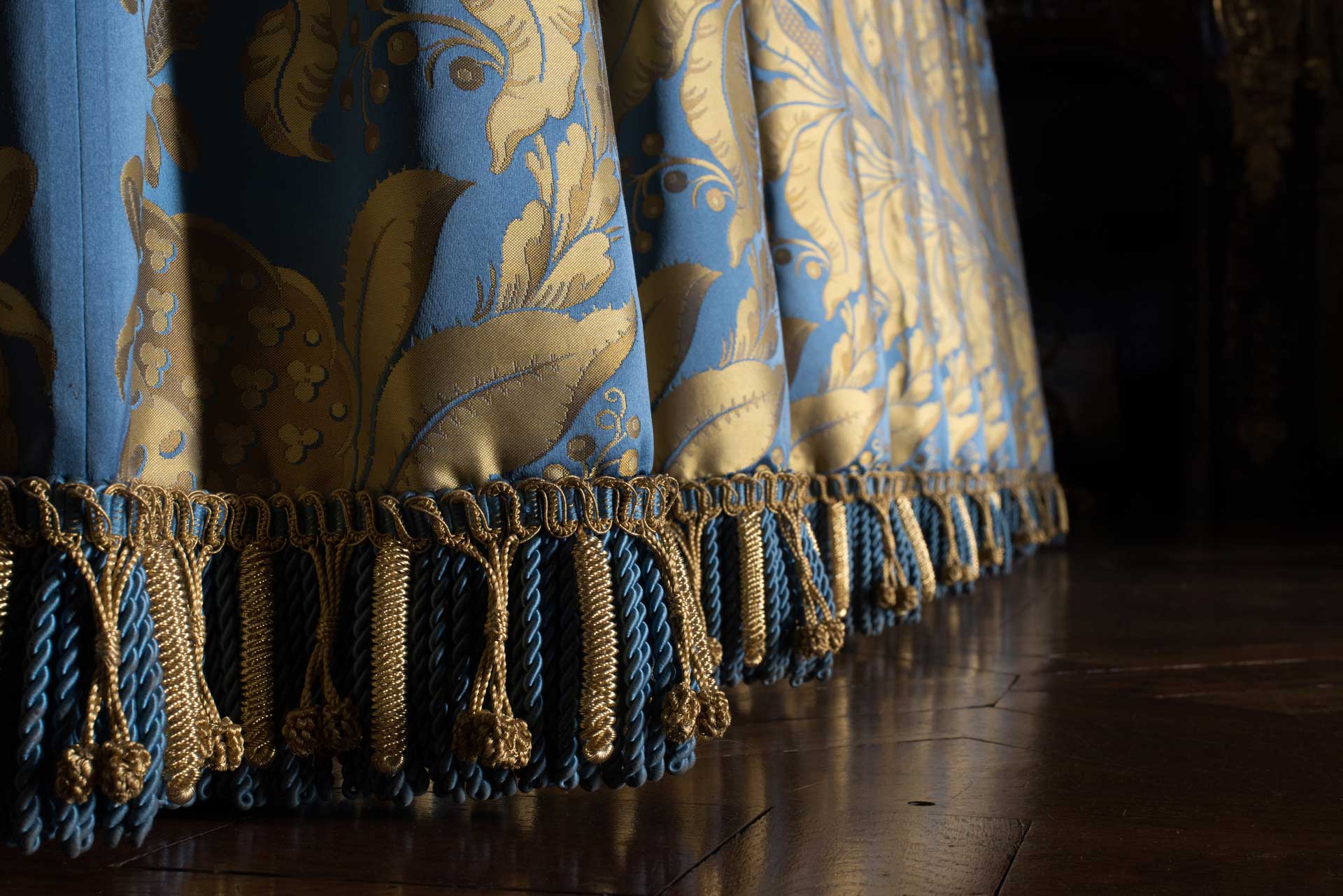
The King's Chamber
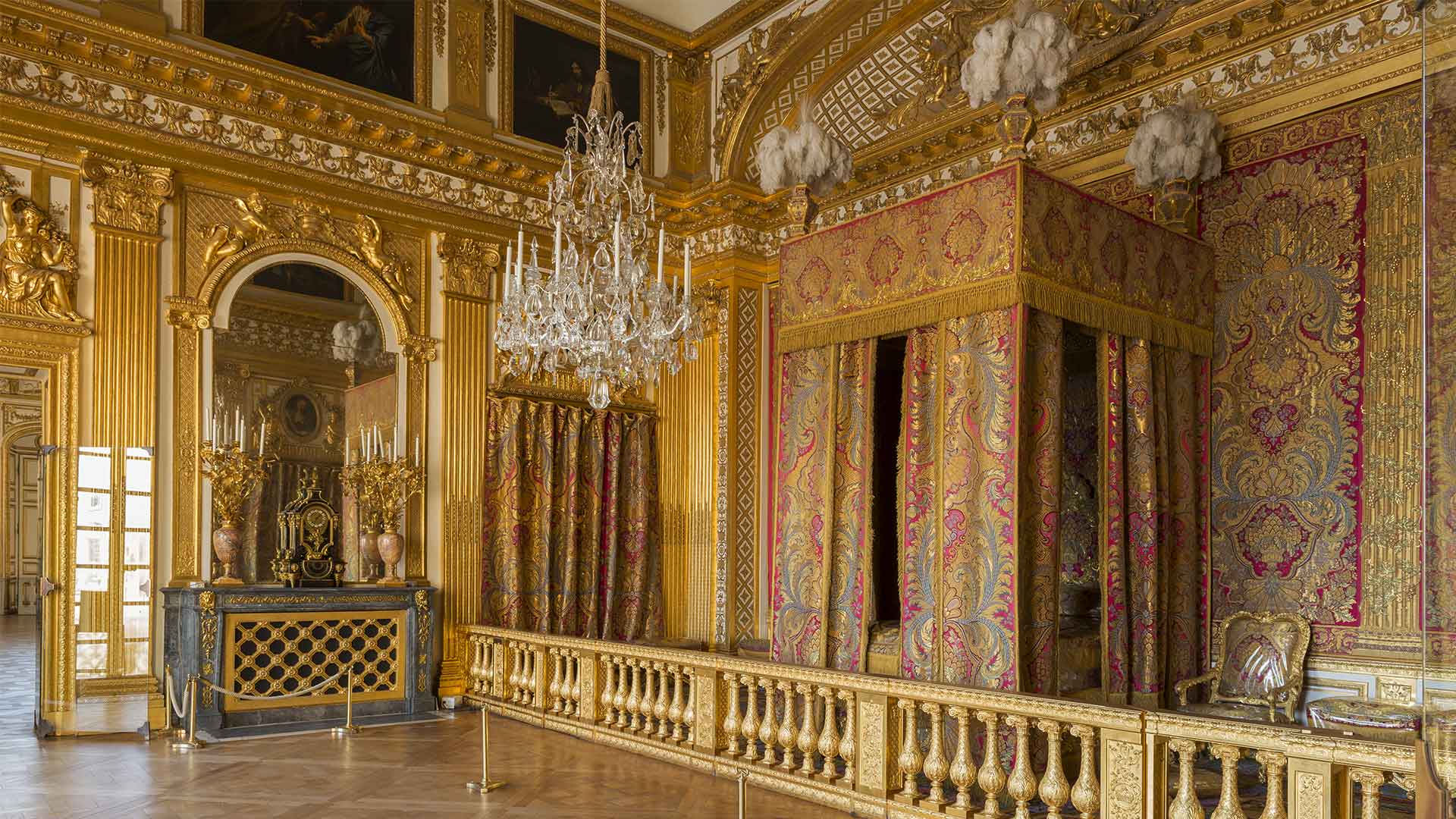
Peace Salon
The Peace Room is the counterpart to the War Room and is symmetrical to it. Since the end of Louis XIV's reign, this room has been considered part of the Queen's Apartment. Consequently, it is separated from the Hall of Mirrors by a partition. During the reigns of the various queens, the room was a place where music and then games were played.
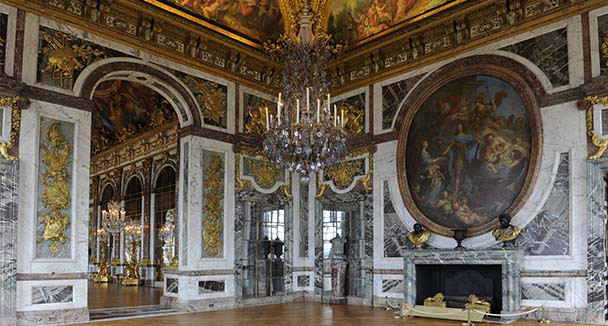
Queen's Chamber
The Queen's Bedchamber is located opposite the Apollo Room. It is where the queen slept, hosted her private audiences and went through the public going-to-bed ceremony.
Contrary to the King's Bedchamber, this room was occupied by the various queens up to 1789.
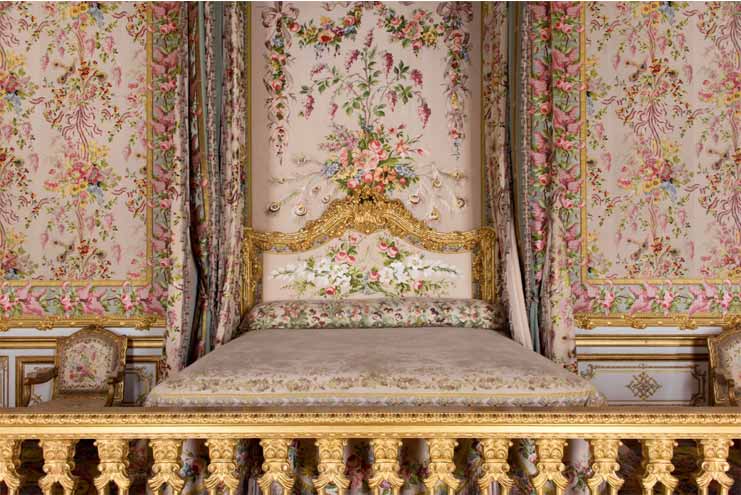
Nobles Salon
This room underwent several changes of use and décor with each new queen. Under Louis XIV, it was Queen Maria-Theresa's antechamber. Under Louis XV, Queen Marie Leszczyńska held her formal audiences there. Under Louis XVI, Marie-Antoinette had it completely redecorated, except for the ceiling paintings.
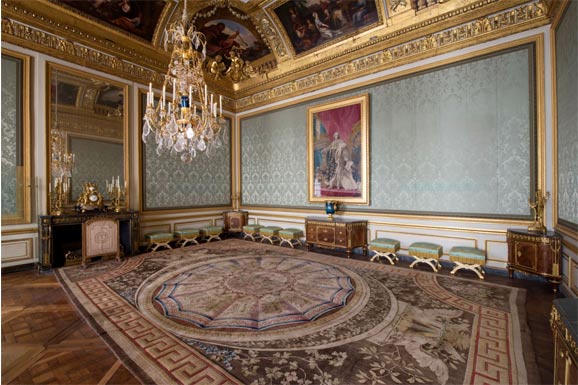
Grand Couvert Antechamber Of The Queen
This room is so called because it is where the king and queen would take their meals in public. A genuine spectacle, this solemn moment constituted a display of their sovereignty. Queen Marie-Antoinette demanded that music be played throughout every meal. A stage for the musicians was therefore installed in the room.
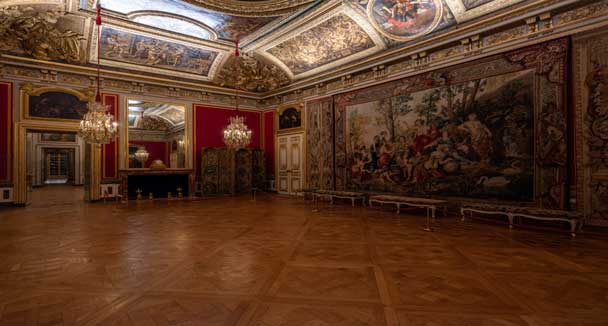
Queen’s Guard Room
The Queen's State Apartment was accessed via this guard room. Night and day, twelve bodyguards stood watch over the queen. The Queen's Guard Room is the only one in the Queen's State Apartment whose 17th-century décor has been fully preserved.
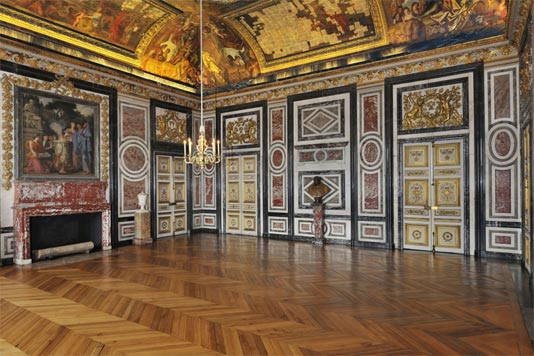
Madame De Maintenon's Apartments
Occupied by Madame de Maintenon, the second wife of Louis XIV, from 1684 to 1715, these apartments consisted of four rooms: two antechambers, one chamber and one large cabinet. They were completely disfigured in the nineteenth century and no traces remain of their previous decoration.
Today these apartments are used to house temporary exhibitions.
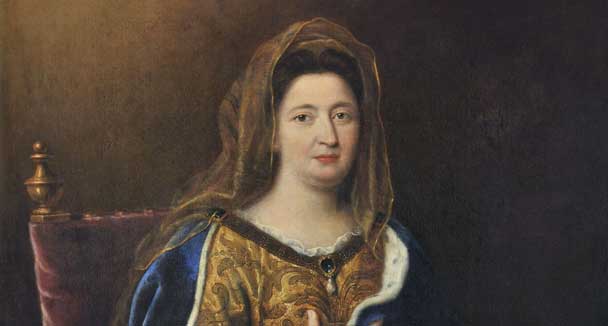
Coronation Room
Louis-Philippe had the greatest paintings of his Museum of the History of France installed in the former Guard Room, including The Coronation of Napoleon, painted by Jacques-Louis David. He decided to dedicate this room to the glorification of Napoleon I.
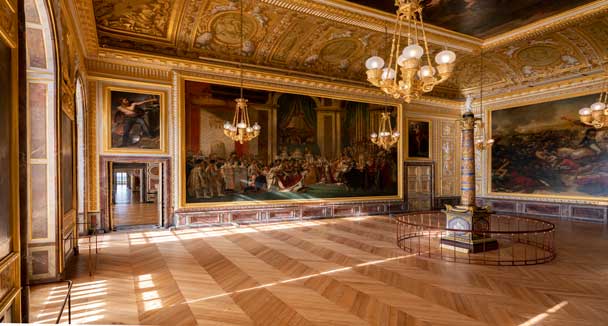
Gallery Of Battles
On the mobile app, listen to the audio commentaries of the paintings at the bottom of this screen.
Much larger than the Hall of Mirrors, the Gallery of Battles was the first ensemble chosen by Louis-Philippe for his Museum of the History of France. It presents an important series of historical paintings dedicated "to all the glories of France" and thus constitutes a "national record".
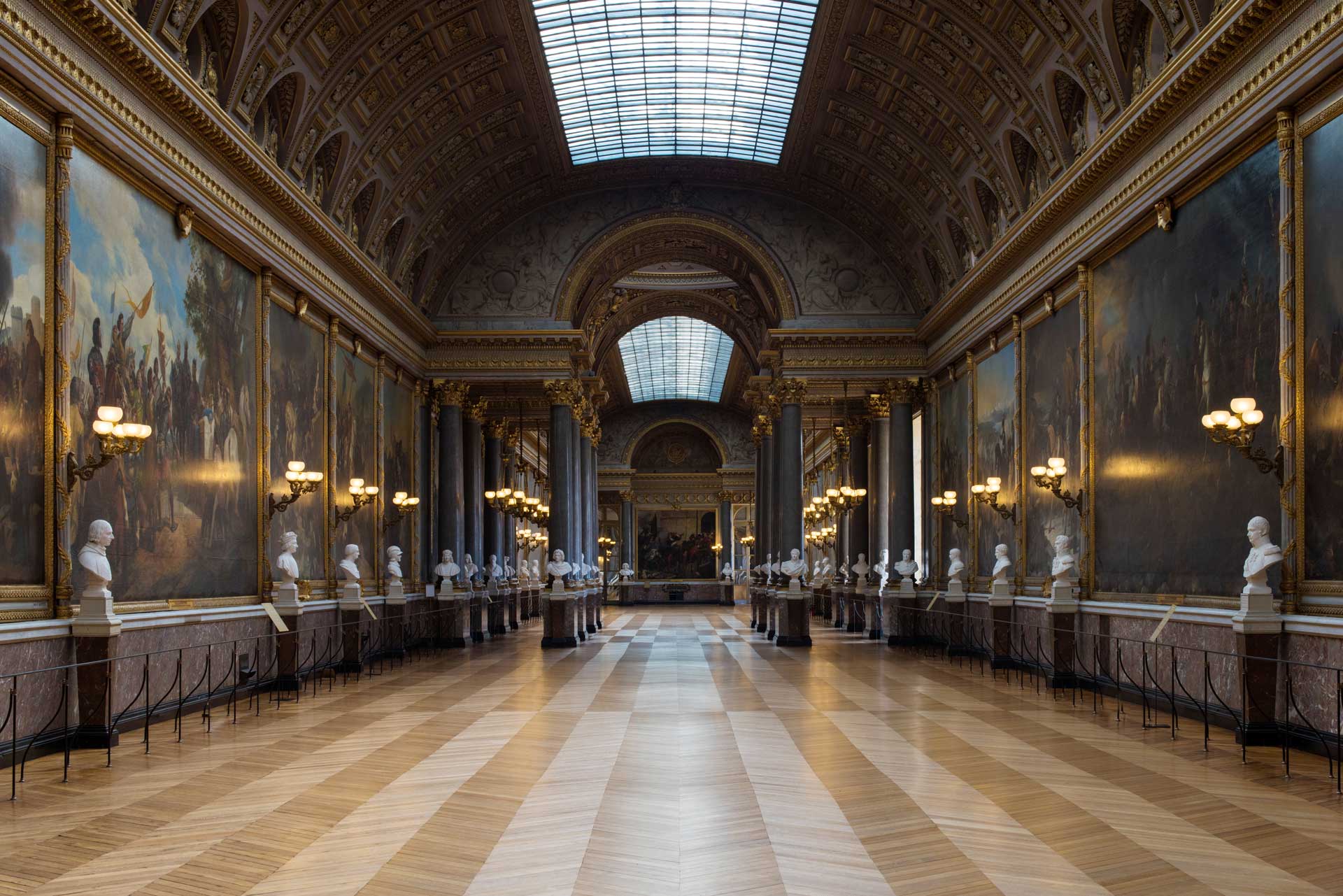
Gallery Of The History Of The Palace
With the main Palace, the Trianon palaces, the gardens and the park, Versailles is a site whose topography and history are rich. Located at the beginning of the Grand Apartments tour, the Gallery of the History of the Palace is an essential introduction to the visit.
Under the Ancien Régime, these rooms were the apartments of the royal princes, before Louis-Philippe transformed them to present a brief history of France through works ranging from the Baptism of Clovis to Louis XVI giving La Pérouse his instructions.
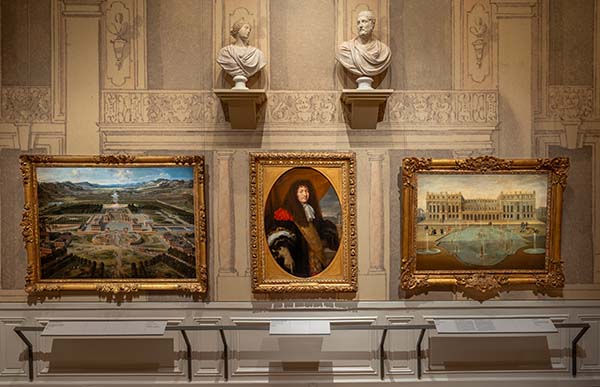
Crusades Rooms
Louis-Philippe devoted a large area in the centre of the northern wing, on the town side, to the Crusades, replacing former courtiers' apartments. These five rooms can be accessed via the ground floor gallery in the northern wing.
Louis-Philippe created these rooms to honour the old noble families that took part in these expeditions in the Middle East.
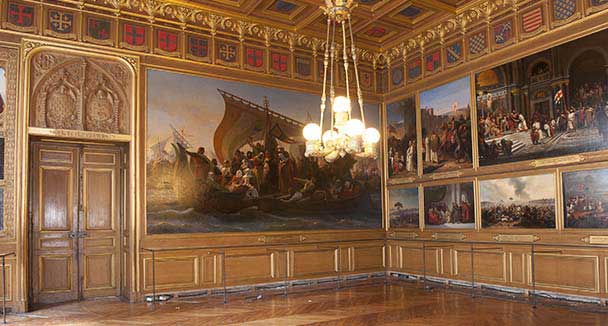
Royal Chapel
The construction of the Royal Chapel lasted between 1689 and 1710. Every day, usually in the morning at 10am, the court would assemble for the King's mass.
Every Thursday, an orchestra gives audiences the chance to discover the full range of the European repertoire from the 17th and 18th centuries.
The Royal Chapel is accessible as part of a guided tour.
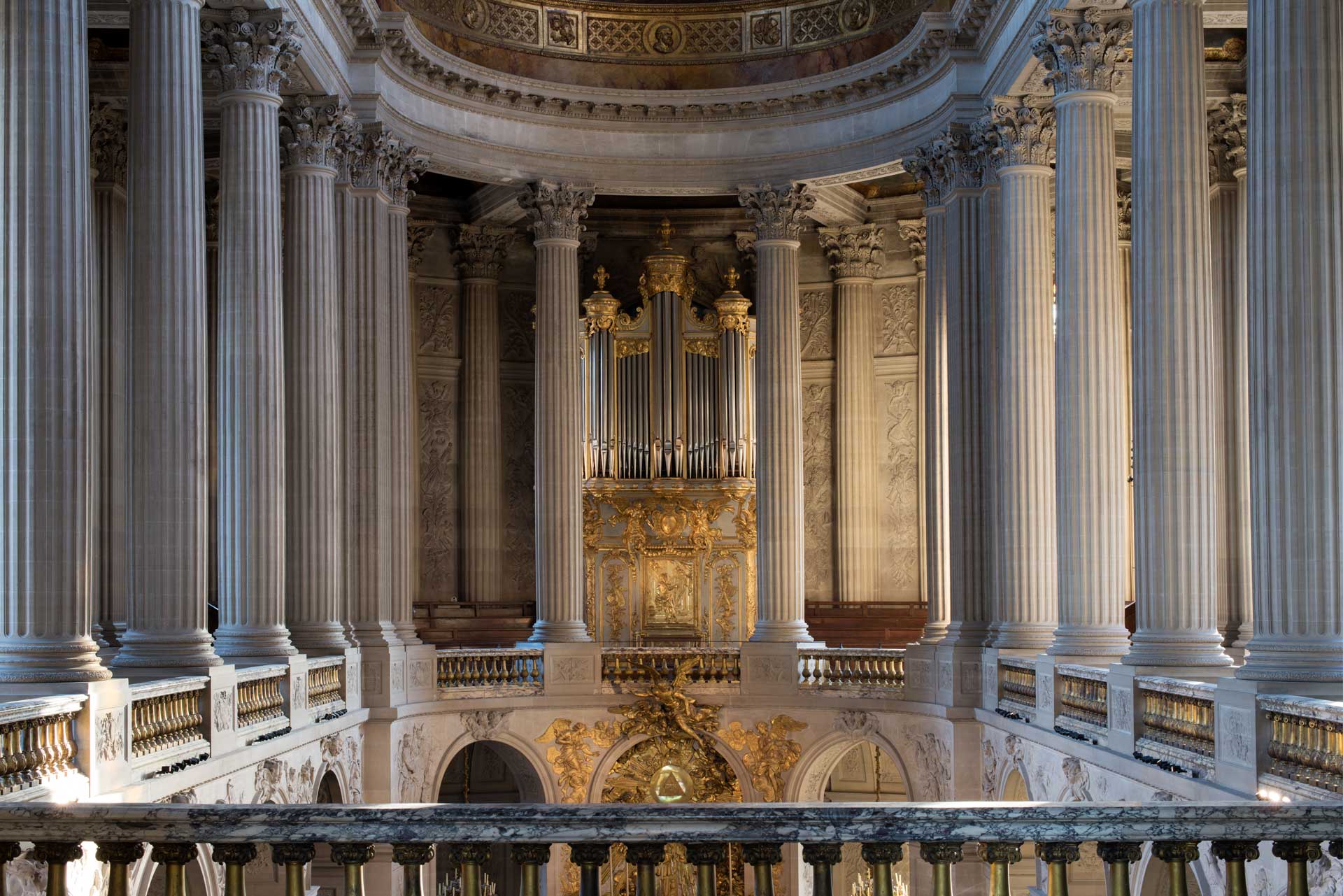
Access Grand Apartments (Hall Of Mirrors, King’s Chamber) - Gl
Visitors arrive at the Grand Apartments through the Gallery of the History of the Palace or the sculpture gallery. By taking this tour, visitors can explore the apartments of the King and Queen of France.
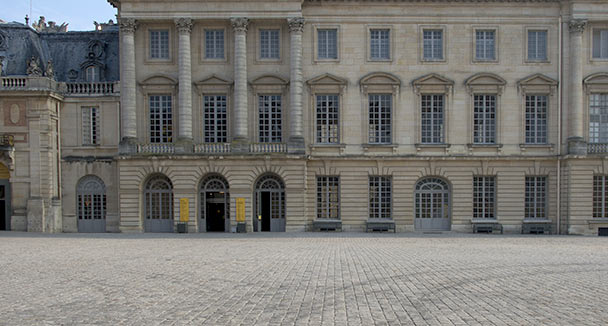
Royal Opera
Inaugurated in 1770 for the marriage of the Dauphin, the future Louis XVI, to Marie-Antoinette of Austria, the Royal Opera soon became one of the greatest concert halls in Europe.
These days, concerts, operas and ballets are performed here all year round. More information about performances.
The Royal Opera is accessible as part of a guided tour.
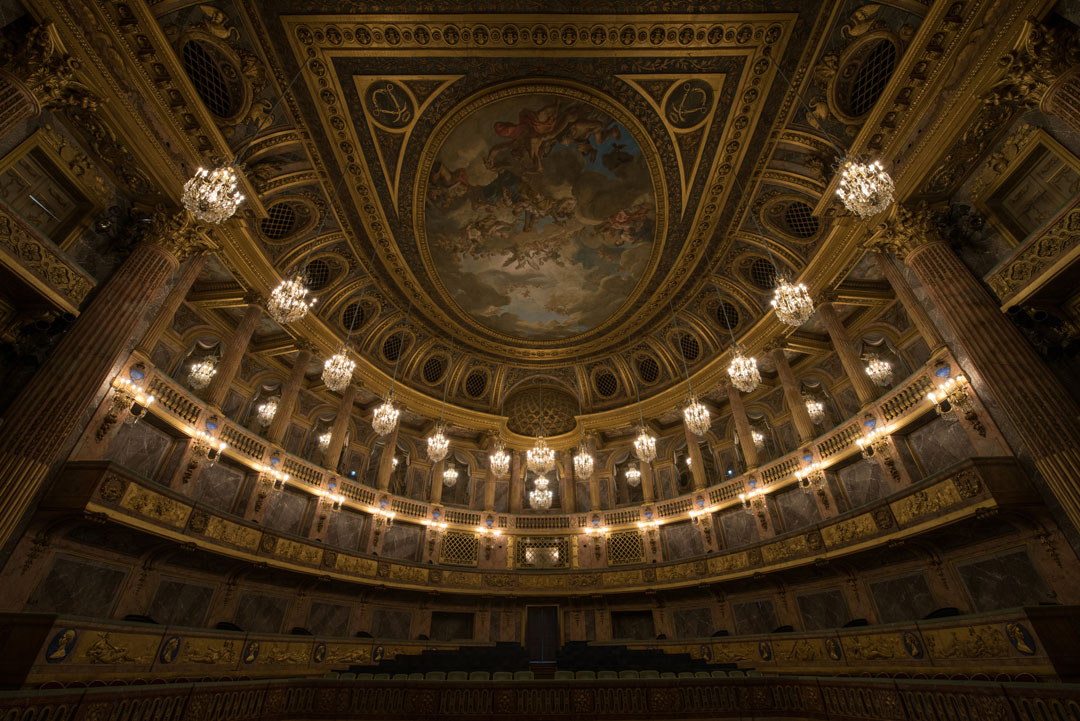
Royal Chapel
The construction of the Royal Chapel lasted between 1689 and 1710. Every day, usually in the morning at 10am, the court would assemble for the King's mass.
Every Thursday, an orchestra gives audiences the chance to discover the full range of the European repertoire from the 17th and 18th centuries.
The Royal Chapel is accessible as part of a guided tour.

Gallery Of The History Of The Palace
With the main Palace, the Trianon palaces, the gardens and the park, Versailles is a site whose topography and history are rich. Located at the beginning of the Grand Apartments tour, the Gallery of the History of the Palace is an essential introduction to the visit.
Under the Ancien Régime, these rooms were the apartments of the royal princes, before Louis-Philippe transformed them to present a brief history of France through works ranging from the Baptism of Clovis to Louis XVI giving La Pérouse his instructions.

Hall Of Mirrors
This vast gallery (73 m in length, 10.5 m in height and 12.3 m in width) was constructed by Jules Hardouin-Mansart in 1678 and its vaulted ceiling was painted by Charles Le Brun between 1681 and 1684. The seventeen bay windows are matched by seventeen arches decorated with mirrors. The gallery served for the monarch's daily passage to the Chapel and the Queen's Apartment. It also served for courtly celebrations, extraordinary audiences, receiving ambassadors and for masked and fancy-dress balls. It has continued to be a historic location even after the monarchy: William I was declared Emperor of Germany here on 18 January 1871, and the Treaty of Versailles that ended the First World War was signed here on 28 June 1919.
These days, concerts are performed here all year round. More information about concerts.

Gallery Of Battles
Built by architect Frédéric Nepveu in the nineteenth century, the Gallery of Battles was the first room commissioned by King Louis-Philippe for his museum of French history. The gallery was designed to represent his desire for national reconciliation, and presents a major series of historic paintings dedicated "to all the glories of France".

The Louis Xiv's Childhood
After 23 years of marriage to Anne of Austria, Louis XIII finally gained his much-longed-for heir in Louis XIV, who was acclaimed as 'Louis-Dieudonné', or 'Louis, the gift from God'. The portraits in this room depict him as a child, heir to the throne of France, who became king at a very young age.
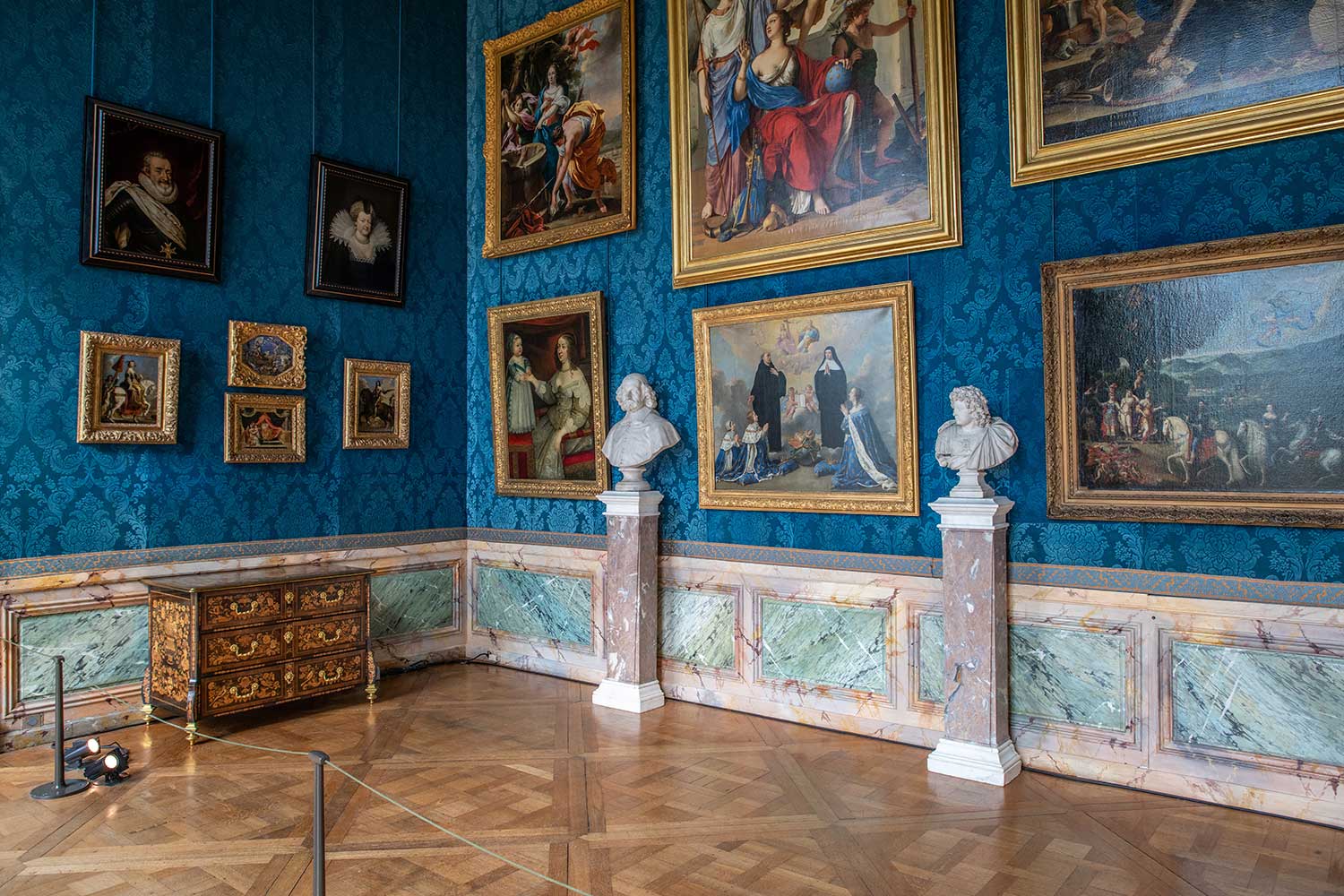
Early Military Campaigns
Louis XIV was a warrior king for whom victory was a means of cementing his authority. After his marriage to Maria Theresa, daughter of the King of Spain, Louis XIV claimed certain Spanish territories in Flanders, thus triggering what is known as the War of Devolution.
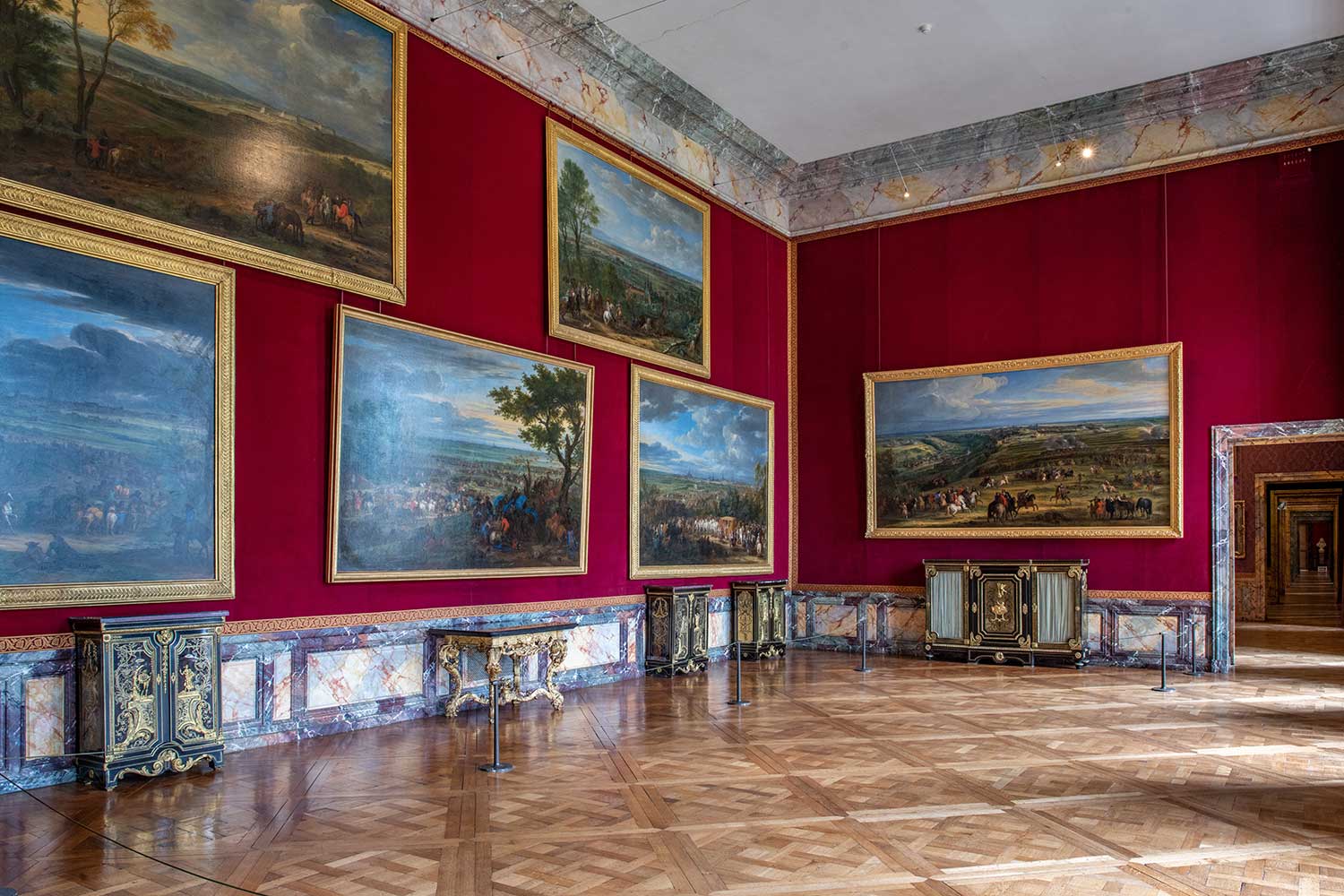
The Académie Royale De Peinture Et De Sculpture
The king called upon the artists of the Académie Royale de Peinture et de Sculpture to illustrate the glory of his kingdom and its ruler. The academy, which was established in 1648 and overhauled in 1660, was a centre of training in and development of aesthetic principles. To be admitted to it, prospective members had to present a 'reception piece', i.e. a work on a given subject.
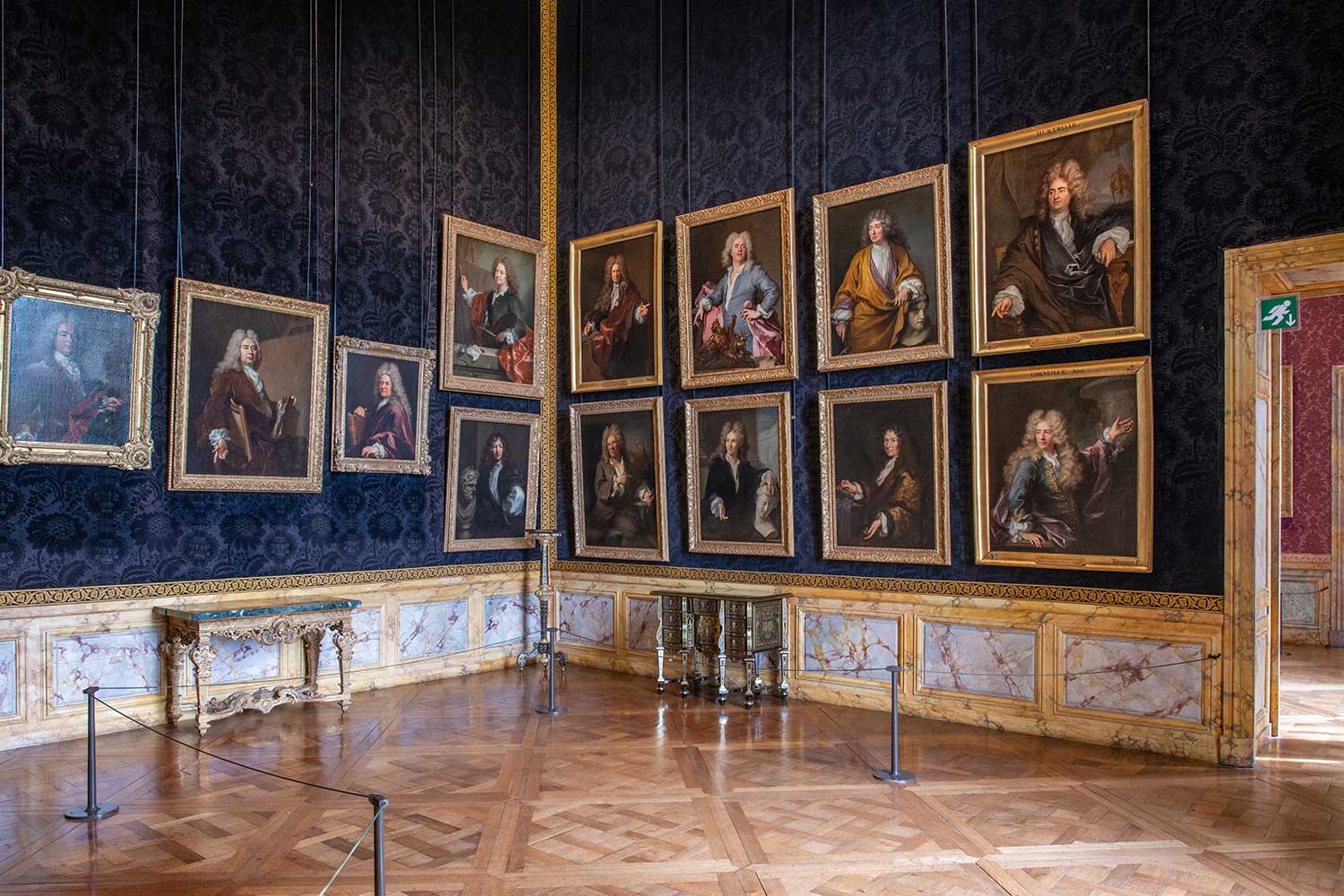
The Arts At The Start Of His Reign
Ever since 'La Fronde' (the French civil wars between 1640 and 1650 sparked by a double revolt by parliament and the princes who opposed Louis XIV and his family), Louis XIV mistrusted Paris. He therefore set up and oversaw the court at Versailles, where spectacular parties were organised and to which the great artists of the day were invited. In this way, Louis XIV contributed to the advancement of the arts.
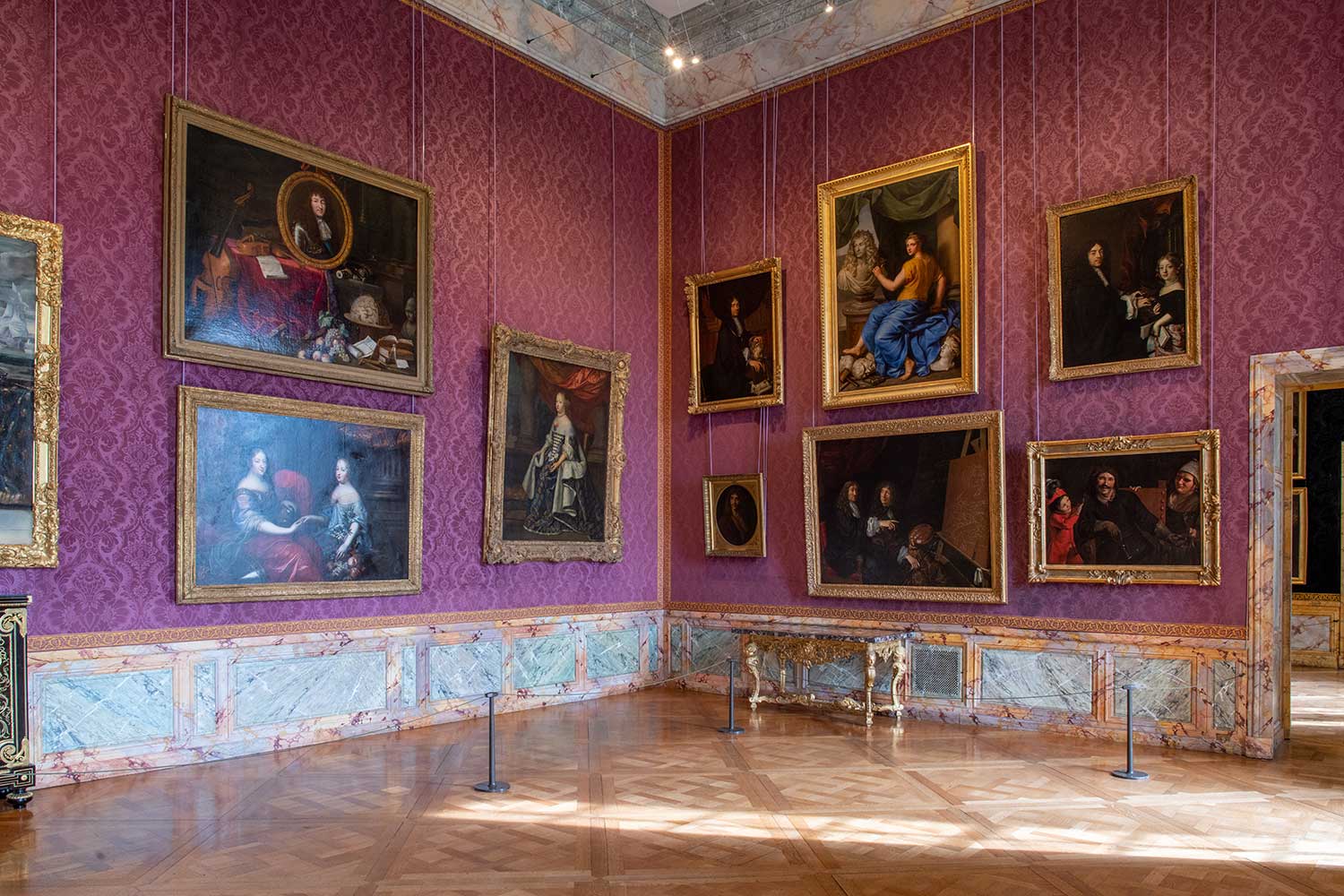
The Exercise Of Power
Louis XIV was an absolute monarch. He governed alone and relied on counsellors and ministers, whose role was to carry out royal wishes.
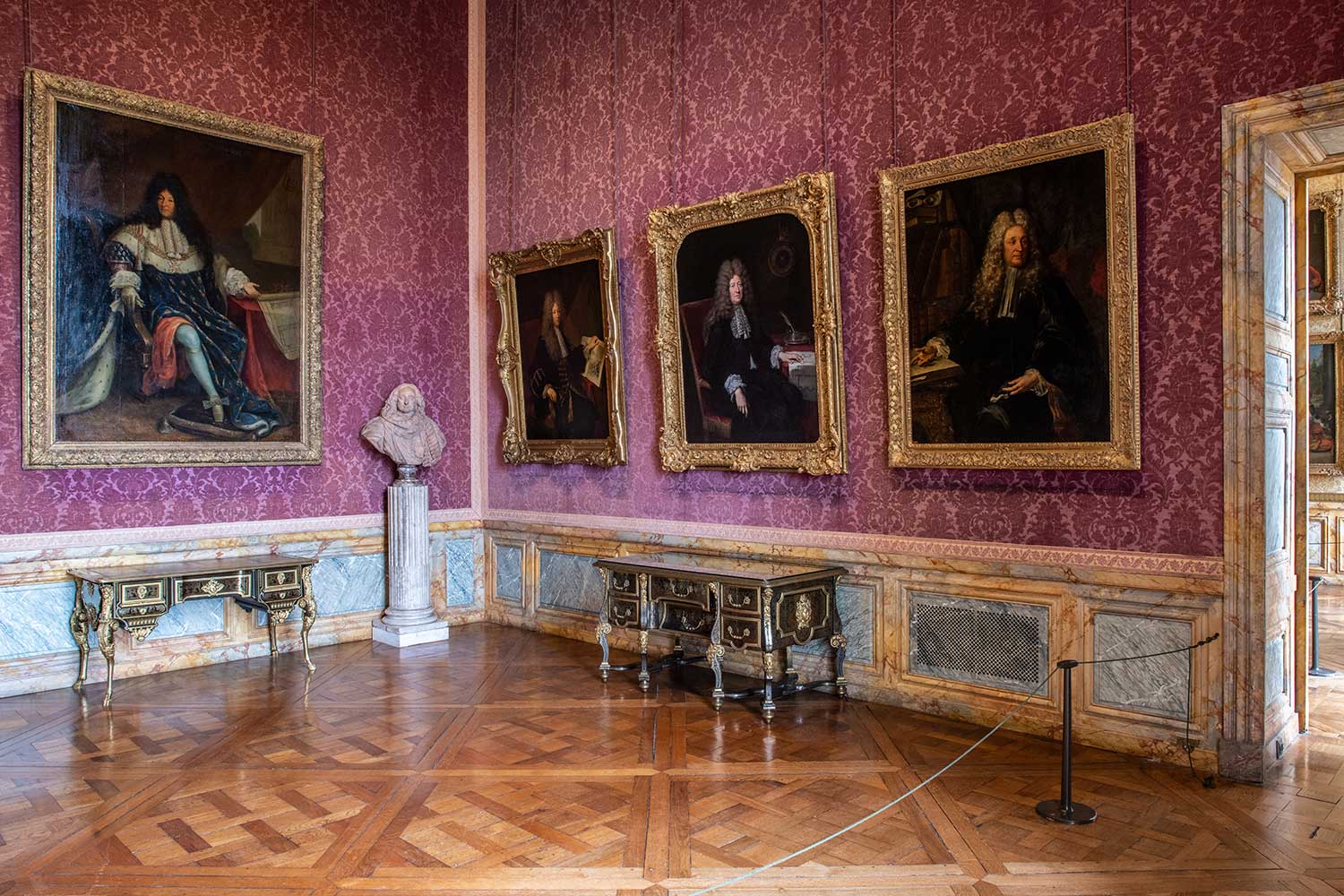
Versailles And Europe
Louis XIV turned France into the leading power in Europe and the world. He expanded the kingdom and furthered the reputation of the country beyond its borders.
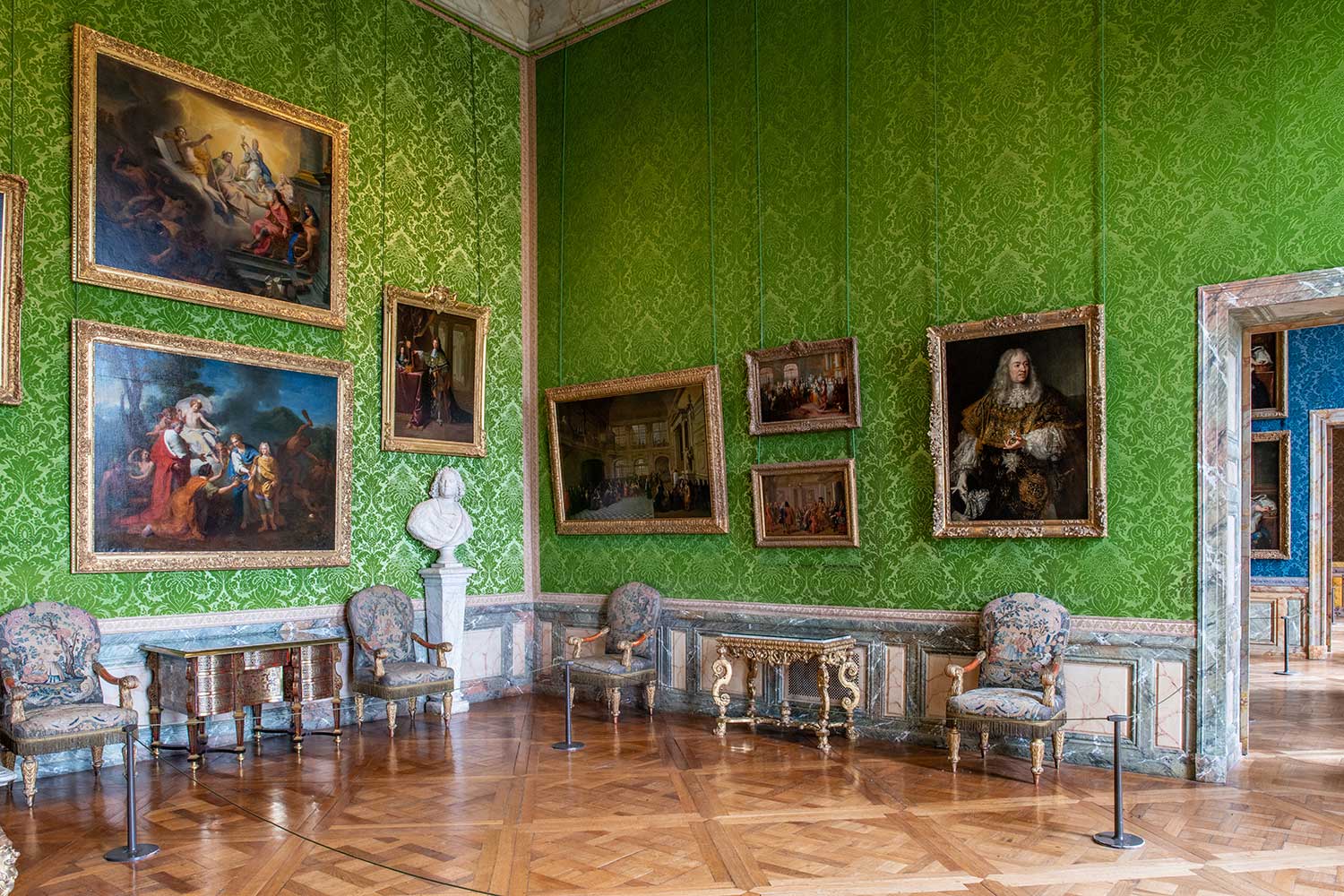
At The Turn Of The Reign (The 1690S)
In France, the crown passes from father to son according to primogeniture. Of Louis XIV's six children, only his firstborn survived to adulthood. He was given the title of dauphin. However, the succession to the throne was not completely assured…
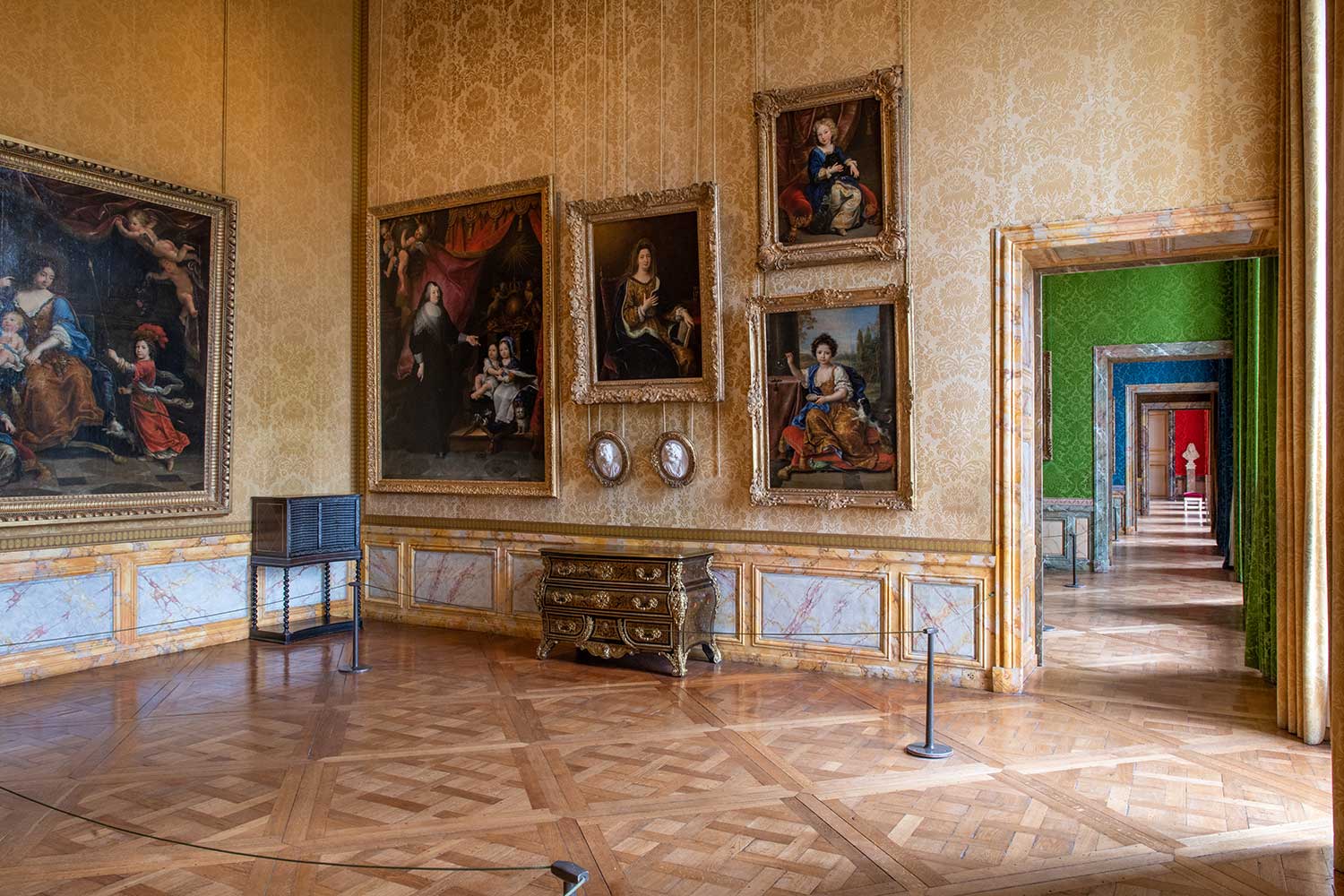
The King At War
Louis XIV has been portrayed many times as a war commander. These portraits create an image of him as a great and conquering king, and symbolise the military might of France.
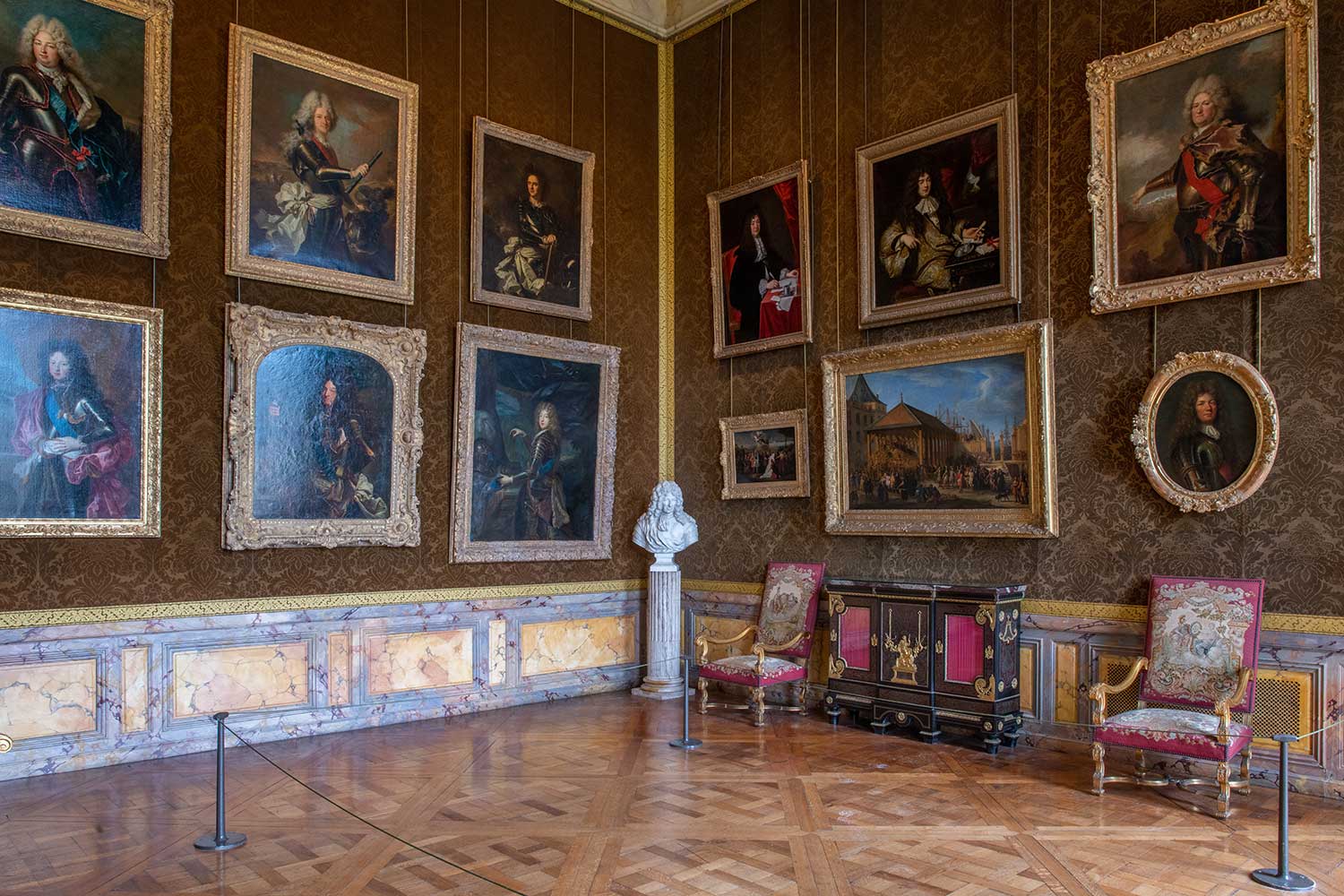
Royal Residences
In 1682, Versailles became the seat of government. As an absolute monarch, Louis XIV increased the number of royal residences as a way of extending his power. His successors and the royal family liked to spend time in these places, far from the Palace, often, simply, to get away from life at court.
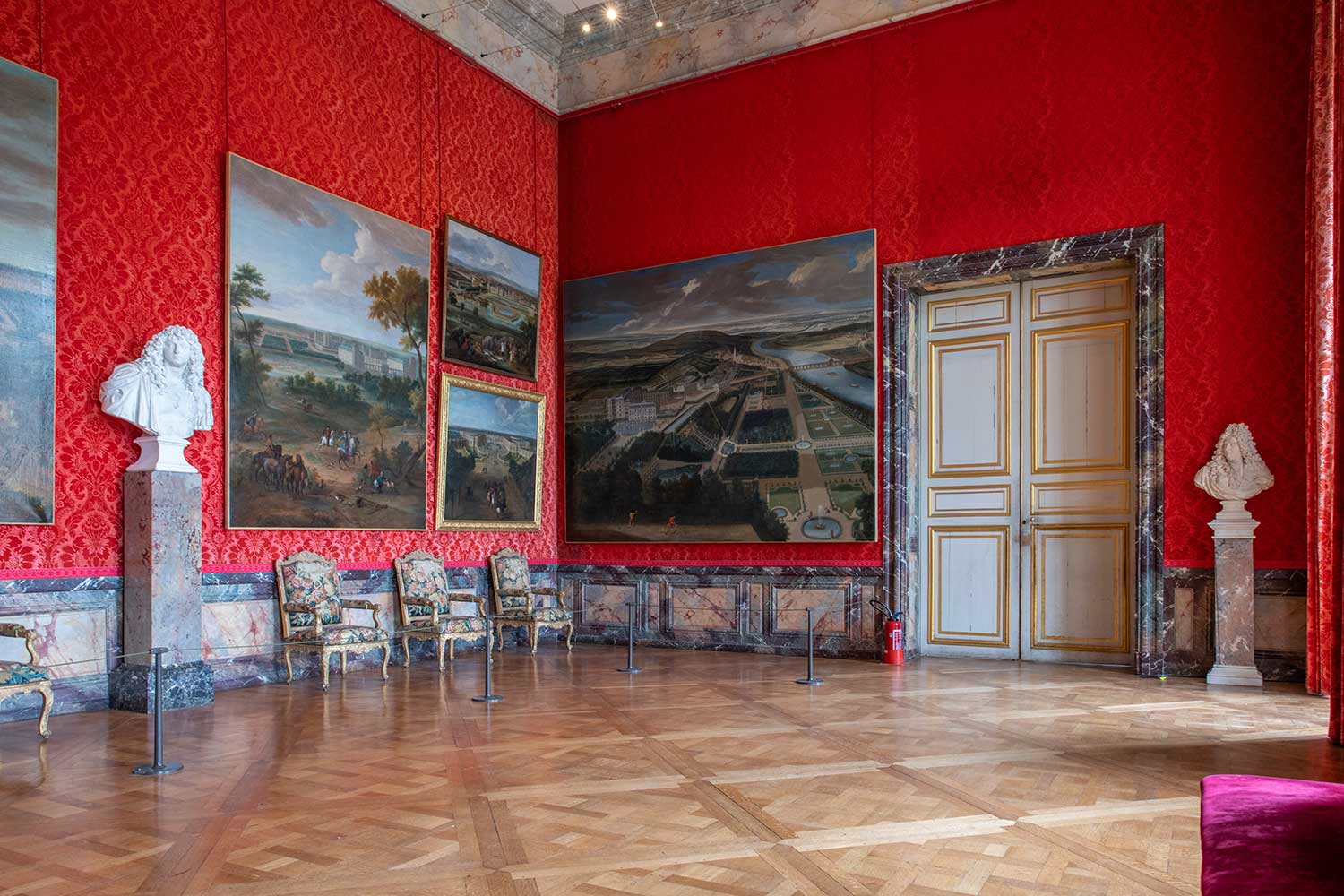
Louis Xiv Rooms ?
Louis XIV Rooms give visitors a vast panorama of the 17th century featuring the King, his family, the court and the major political, military and artistic events that marked his reign.
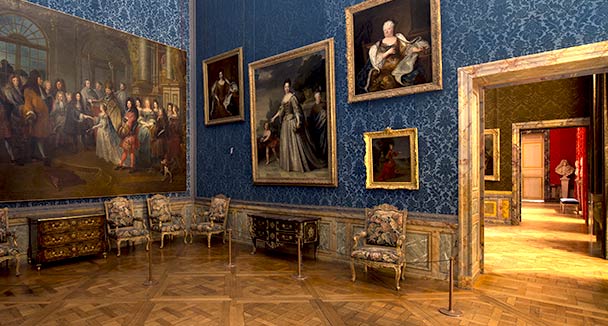
The Marble Courtyard
The Marble Courtyard is the original courtyard of the palace, built by Louis XIII in 1623. Its black and white tiles come from the castle of Vaux-le-Vicomte.
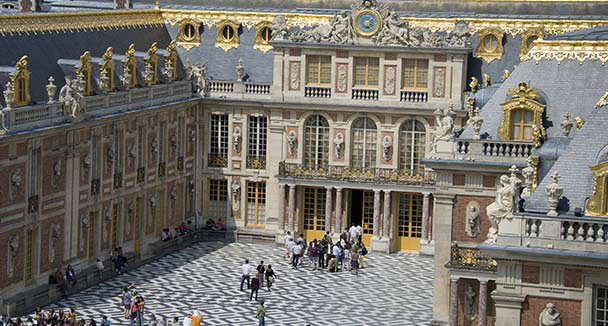
The Queen’s Bedchamber
The bedroom is the main room of the apartment. The queen slept there, often joined by the king, and granted her private audiences. Two queens (Marie-Therese of Austria and Marie Leszczyńska) and two dauphines (Marie-Anne of Bavaria and Marie-Adélaïde of Savoy), died there, and nineteen children of France were born there.

The Royal Princesses
A princess royal must, by definition, be a relative of the king. This family relationship may or may not be direct: the term describes both the natural female offspring of Louis XIV and the wives of the crown princes. Élisabeth-Charlotte de Bavière, known as Princess Palatine, is a perfect example.
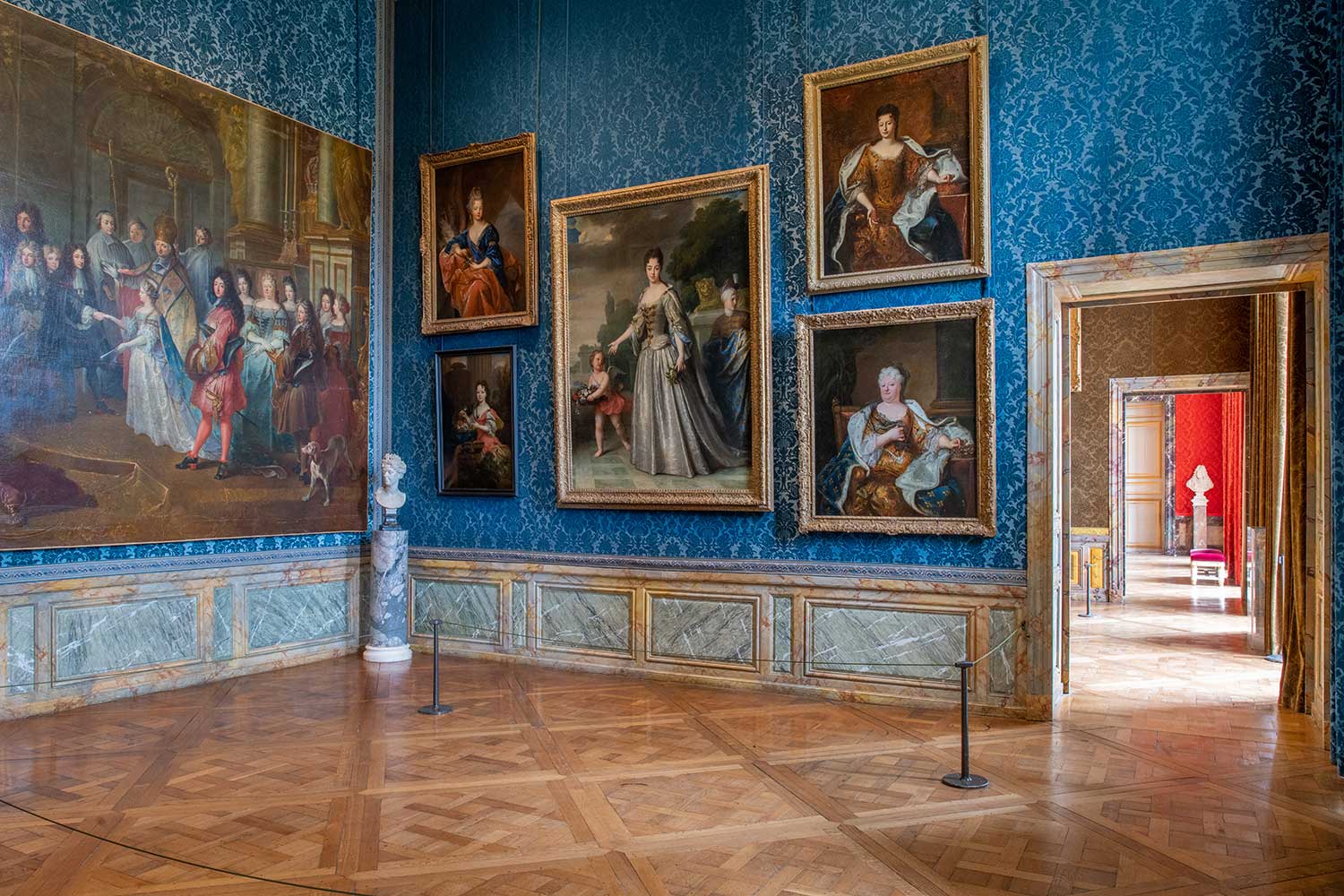
The Coach Gallery
The Coach Gallery has been housed in one of the Main Stables galleries since 1985. There you can see the gala carriages commissioned for Napoleon's wedding, Louis XVIII's funeral carriage, Charles X's coronation carriage, other carriages from the 3rd Republic and sleds and sedan chairs from the 18th century.
Free access
From 1 April to 31 October:
Open on Saturdays, Sundays and public holidays (excluding Mondays) and from Tuesday to Sunday during zone C school holidays (from Tuesday 9 April to Sunday 21 April).
Opening times: 12.30pm - 6.30pm
Last admission: 5.45pm
From 2 July to 29 September, the gallery is open from Tuesday to Sunday, 9am to 6.30pm (last admission 5.45pm).
From 1 November to 31 March:
Open on Saturdays and Sundays Opening times: 12.30pm - 5.30pm
Last admission: 4.45pm
Closed on 25 December 2024 and 1 January 2025
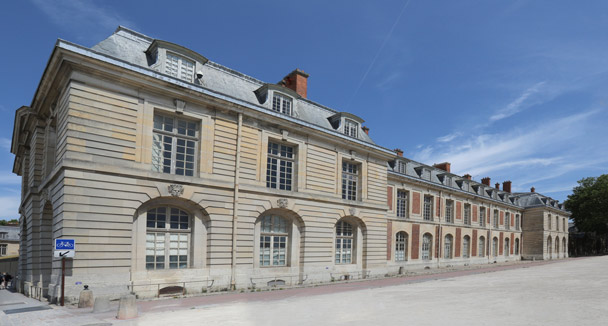
Crusades Rooms
Louis-Philippe devoted a large area in the centre of the northern wing, on the town side, to the Crusades, replacing former courtiers' apartments. These five rooms can be accessed via the ground floor gallery in the northern wing.
Louis-Philippe created these rooms to honour the old noble families that took part in these expeditions in the Middle East.

The Empire Rooms
As a contemporary of Napoleon I, King Louis-Philippe was eager to obtain the support of former members of the Empire and the favour of Bonapartist opinion. At Versailles, he gathered most of the large paintings commissioned by Napoleon in the ground floor of the Palace’s South Wing, under the Gallery of Great Battles.

The Empire Rooms
As a contemporary of Napoleon I, King Louis-Philippe was eager to obtain the support of former members of the Empire and the favour of Bonapartist opinion. At Versailles, he gathered most of the large paintings commissioned by Napoleon in the ground floor of the Palace’s South Wing, under the Gallery of Great Battles.

The Dauphine's Bedroom
Here you are in the Dauphine's bedroom. Apart from the two door tops depicting the story of Psyche, by the painter Jean Restout, and the interior shutters by Jacques Verberkte, nothing remains of the decor put in place the year of the Dauphine's wedding.
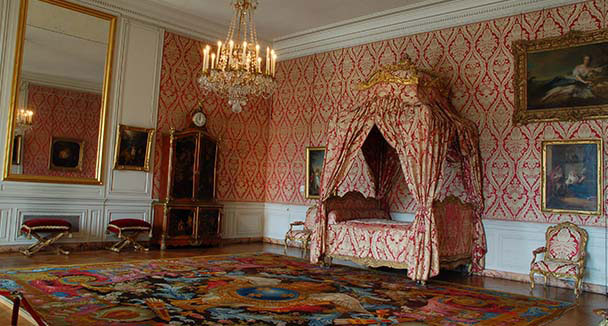
The Dauphin's Great Cabinet
In this large drawing room, the Dauphin played music in the company of his sisters and studied geography.
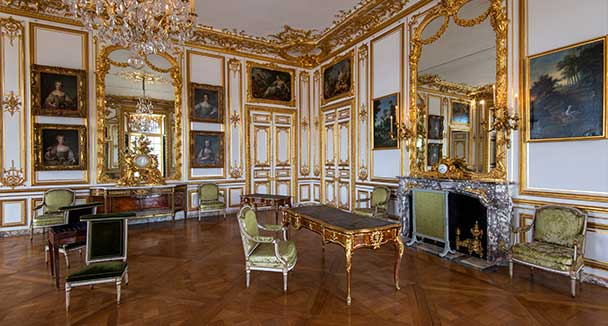
Dauphin's Chamber
The walls of the Dauphin's Bedchamber are covered with green silk damask hangings. This colour was considered conducive to rest and sleep.
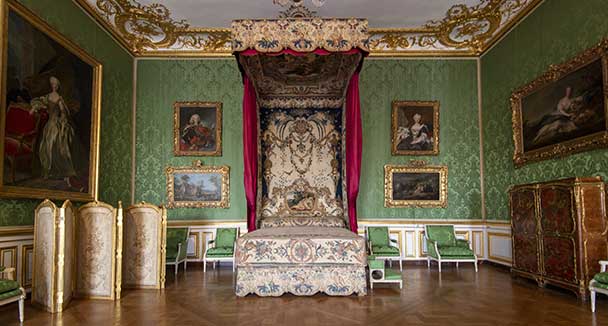
The Dauphin's Second Antechamber
Portraits of the royal family adorn the walls of the Dauphin’s Second Antechamber.
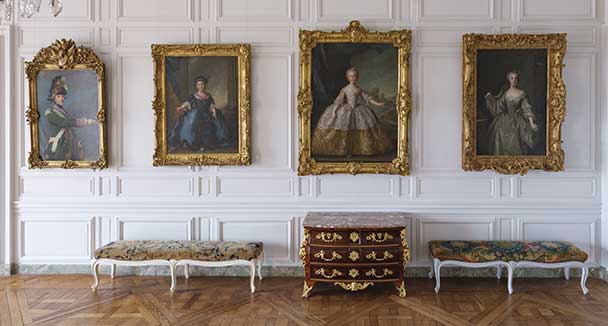
Start Of The Tour
Visit the Apartments of the Daughters of Louis XV and and the Apartments of the Dauphin and the Dauphine (entrance 1) before discovering the Grands Appartements (entrance 2).
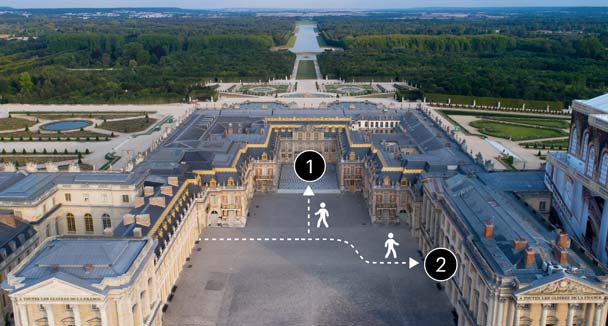
Where are concerts and shows held?
Depending on the show, the location within the Palace may vary: the Royal Opera, the Royal Chapel, the Hercules Salon, the Hall of Mirrors, etc. Access is through the Palace Entrance B.
Royal Opera
Inaugurated in 1770 for the marriage of the Dauphin, the future Louis XVI, to Marie-Antoinette of Austria, the Royal Opera soon became one of the greatest concert halls in Europe.
These days, concerts, operas and ballets are performed here all year round. More information about performances.
The Royal Opera is accessible as part of a guided tour.

Royal Chapel
The construction of the Royal Chapel lasted between 1689 and 1710. Every day, usually in the morning at 10am, the court would assemble for the King's mass.
Every Thursday, an orchestra gives audiences the chance to discover the full range of the European repertoire from the 17th and 18th centuries.
The Royal Chapel is accessible as part of a guided tour.

Entrance Of Shows
This entrance is used for access to shows at the Royal Opera, the Royal Chapel, the Hercules Salon, the Hall of Mirrors, etc. For further show information.
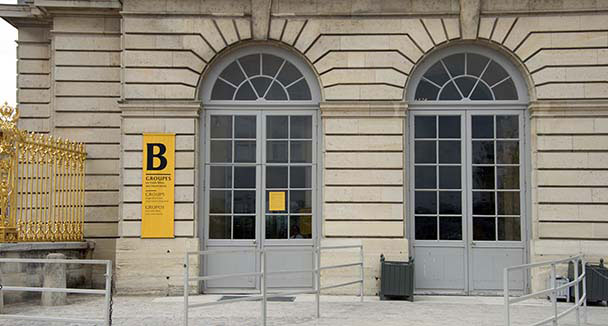
Hall Of Mirrors
This vast gallery (73 m in length, 10.5 m in height and 12.3 m in width) was constructed by Jules Hardouin-Mansart in 1678 and its vaulted ceiling was painted by Charles Le Brun between 1681 and 1684. The seventeen bay windows are matched by seventeen arches decorated with mirrors. The gallery served for the monarch's daily passage to the Chapel and the Queen's Apartment. It also served for courtly celebrations, extraordinary audiences, receiving ambassadors and for masked and fancy-dress balls. It has continued to be a historic location even after the monarchy: William I was declared Emperor of Germany here on 18 January 1871, and the Treaty of Versailles that ended the First World War was signed here on 28 June 1919.
These days, concerts are performed here all year round. More information about concerts.

Where is the Hall of Mirrors?
The Hall of Mirrors is located on the first floor of the Palace and is part of the self-guided tour of the Grand Apartments. After entering, cross the Royal Courtyard and follow the signs to the Grand Apartments.
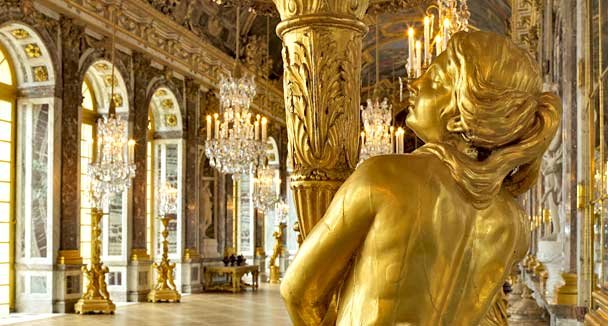
Entrance A - Entrance For Individual Visitors
Due to the anti-terrorist security plan, visitors with large baggage items are not admitted on the domain (exceeding 55x35x20 cm).
This entrance provides access to all unaccompanied routes including temporary exhibitions.
To enter the Palace, you must have a ticket with a reserved time slot. Buy your ticket online. Due to the high number of visitors, admission to the palace can only be guaranteed through online booking.
If you are eligible for free admission, you must have booked a free time slot on the online ticketing service.
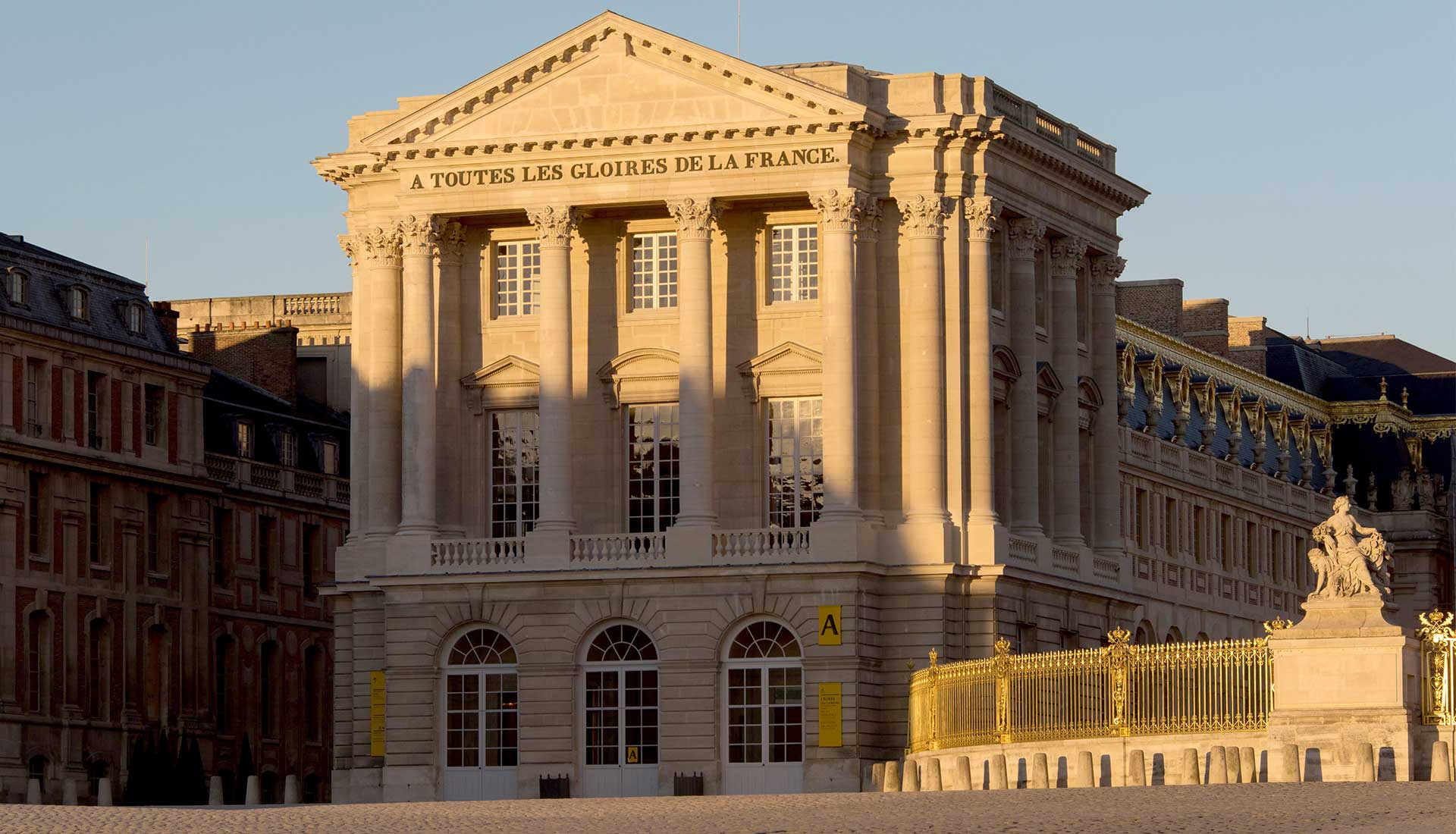
Royal Courtyard
The Royal Courtyard is located behind the Royal Gate and is only accessible with a ticket. It gives access to the different visitor routes around the Palace.

Grand Apartments (Hall Of Mirrors, King’s Chamber)
Visitors arrive at the Grand Apartments through the Gallery of the History of the Palace or the sculpture gallery. By taking this tour, visitors can explore the apartments of the King and Queen of France.

Access Grand Apartments (Hall Of Mirrors, King’s Chamber) - Gv
Visitors arrive at the Grand Apartments through the Gallery of the History of the Palace or the sculpture gallery. By taking this tour, visitors can explore the apartments of the King and Queen of France.
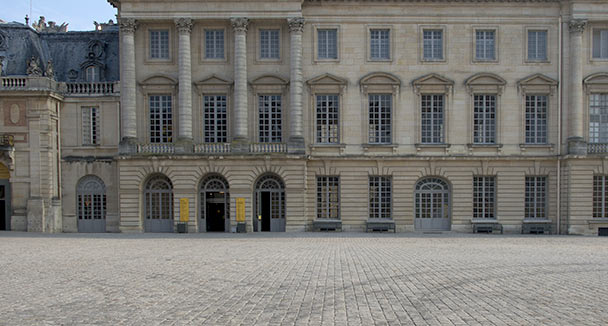
Where is the Grand Apartments tour?
After taking the stairs at the end of the Gallery of History, the Grand Apartments begin with the Hercules Salon.
The Queen’s Staircase
Built in 1680, this staircase soon became the busiest in the Palace, as it led to the King and Queen's apartments. It now gives access to the Royal Courtyard before finishing the tour of the Grand Apartments.
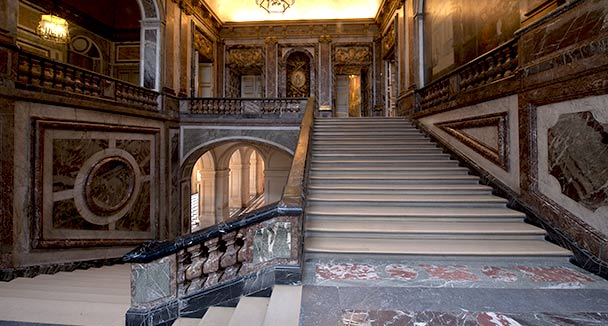
The Hercules Salon
The Hercules Room is the last room to have been created under the reign of Louis XIV. Its painted ceiling, which took three years to complete, is the most epic in the Palace of Versailles, featuring 142 different figures.

Salon Of Abundance
This small salon was installed in 1680. For a long time it served as the home for the Cabinet of Curiosities or Rarities. For evenings in the apartments, this room was reserved for a buffet. Refreshments, coffee, wines and liqueurs would be served in silver vases.
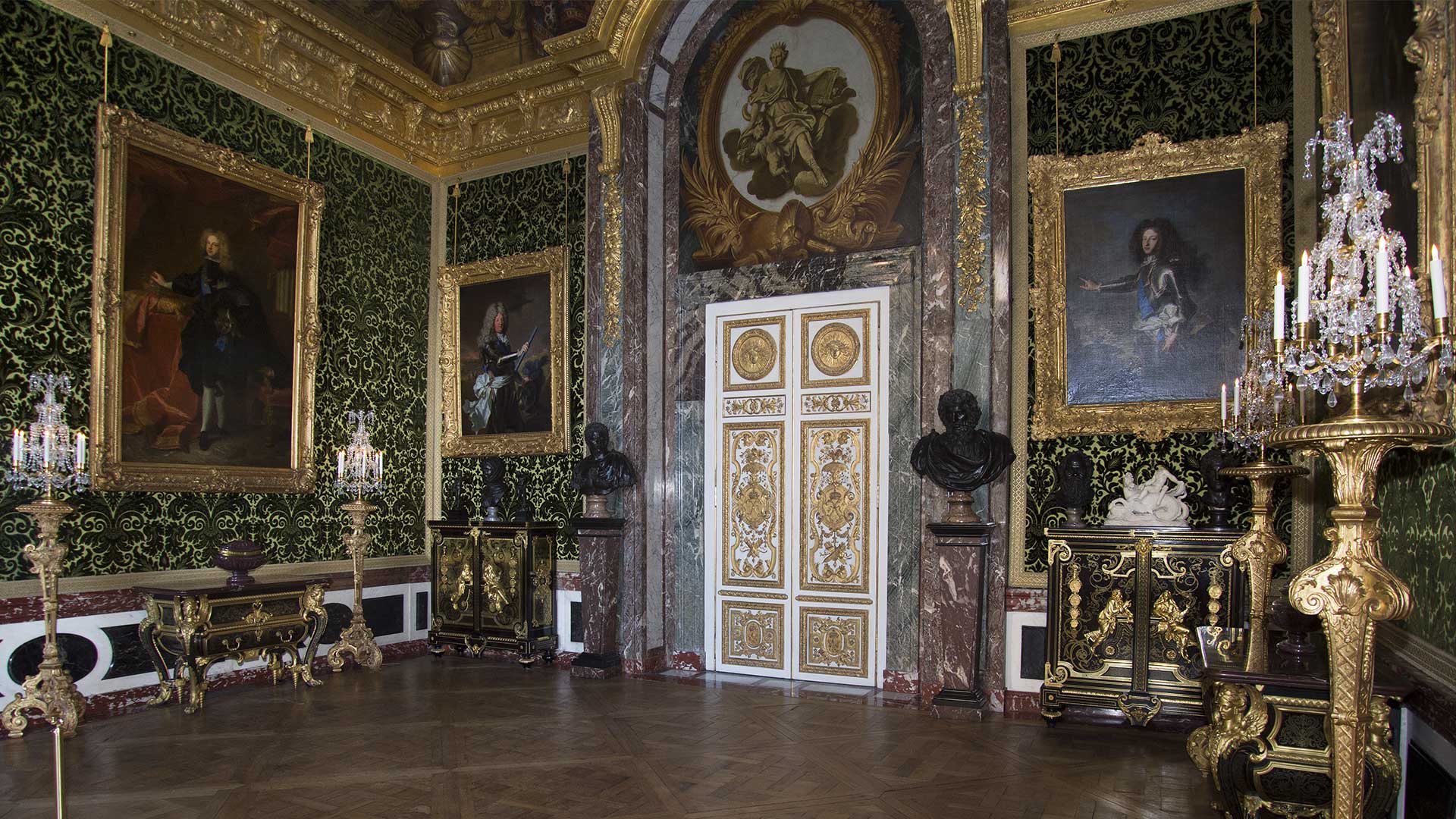
Venus Salon
Under Louis XIV, this room dedicated to the Roman goddess of love constituted the main entrance to the King's State Apartment. Accessed via the Ambassador's Staircase, which no longer exists, it functioned as a type of lobby. During evening gatherings at the apartment, the room was used as a reception, where refreshments were served.

Diana Salon
Like the Venus Room, the Diana Room served as a lobby to the King's State Apartment under Louis XIV. During evening gatherings at the apartment, a billiard table and tiered seating were installed, so that the attendees could follow - without breaking the rules of etiquette - the games at which the king often excelled.

Mars Salon
In Louis XIV's time, the Mars Room marked the start of the King's apartment. It served as a guard room. The room's military function is underlined by the portrayal of Mars, the Roman god of war.

Mercury Salon
The Mercury Room functioned as a state room, because Louis XIV actually slept in his private apartments. That being said, up to 1701, the room hosted the King's getting-up and going-to-bed ceremonies, which were observed by the public.

Apollo Salon
The Apollo room, dedicated to the Roman god of the sun, with whom Louis XIV identified, served as a throne room. Here is where the king would hold his regular audiences. During evening gatherings at the apartment, the room became a ballroom.

War Salon
The War Room depicts Louis XIV as a victorious king. It is immediately adjacent to the Hall of Mirrors and is a counterpart to the Peace Room, situated at the opposite end of the former.

Hall Of Mirrors
The Hall of Mirrors replaced a large terrace overlooking the garden that was considered too exposed to inclement weather. Its seventeen arches decorated with mirrors face seventeen arched windows, creating a commingling of the interior and exterior. The Hall of Mirrors was a place for both social events and demonstrating the political might of Louis XIV.

Council Chamber
Here is where the major political decisions were made. The king would meet here with his ministers. It is also where he received certain audiences.
The room's décor dates from Louis XV's time.

The King's Chamber

Bull’s Eye Antechamber
The second antechamber is also known as the Bull's-Eye Antechamber, thanks to its high-up circular windows. In this room, courtiers would wait to be admitted to the King's Bedchamber.
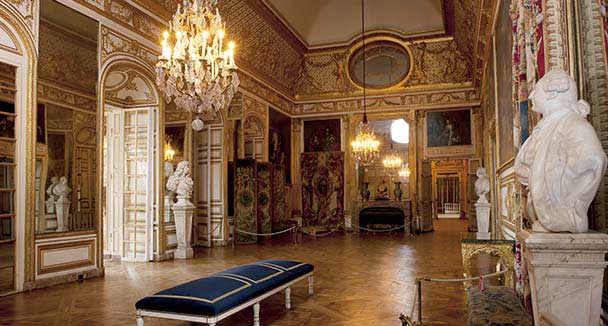
Peace Salon
The Peace Room is the counterpart to the War Room and is symmetrical to it. Since the end of Louis XIV's reign, this room has been considered part of the Queen's Apartment. Consequently, it is separated from the Hall of Mirrors by a partition. During the reigns of the various queens, the room was a place where music and then games were played.

Queen's Chamber
The Queen's Bedchamber is located opposite the Apollo Room. It is where the queen slept, hosted her private audiences and went through the public going-to-bed ceremony.
Contrary to the King's Bedchamber, this room was occupied by the various queens up to 1789.

Nobles Salon
This room underwent several changes of use and décor with each new queen. Under Louis XIV, it was Queen Maria-Theresa's antechamber. Under Louis XV, Queen Marie Leszczyńska held her formal audiences there. Under Louis XVI, Marie-Antoinette had it completely redecorated, except for the ceiling paintings.

Grand Couvert Antechamber Of The Queen
This room is so called because it is where the king and queen would take their meals in public. A genuine spectacle, this solemn moment constituted a display of their sovereignty. Queen Marie-Antoinette demanded that music be played throughout every meal. A stage for the musicians was therefore installed in the room.

Queen’s Guard Room
The Queen's State Apartment was accessed via this guard room. Night and day, twelve bodyguards stood watch over the queen. The Queen's Guard Room is the only one in the Queen's State Apartment whose 17th-century décor has been fully preserved.

Royal Chapel
The construction of the Royal Chapel lasted between 1689 and 1710. Every day, usually in the morning at 10am, the court would assemble for the King's mass.
Every Thursday, an orchestra gives audiences the chance to discover the full range of the European repertoire from the 17th and 18th centuries.
The Royal Chapel is accessible as part of a guided tour.

Where is the gallery of Battles?
On the first floor, after the visit of the State Apartments, the visitor will discover the Gallery of Battles, provided it is open.
Gallery Of Battles
On the mobile app, listen to the audio commentaries of the paintings at the bottom of this screen.
Much larger than the Hall of Mirrors, the Gallery of Battles was the first ensemble chosen by Louis-Philippe for his Museum of the History of France. It presents an important series of historical paintings dedicated "to all the glories of France" and thus constitutes a "national record".

The 1830 Room
This room occupies the location of the first three rooms (the first and second antechambers and the grand cabinet) in the apartment of the Duchess of Orléans, Louis XIV's sister-in-law, which was later inhabited by Madame Elisabeth, his sister.
Louis-Philippe devoted this room to the events that brought him to the throne.
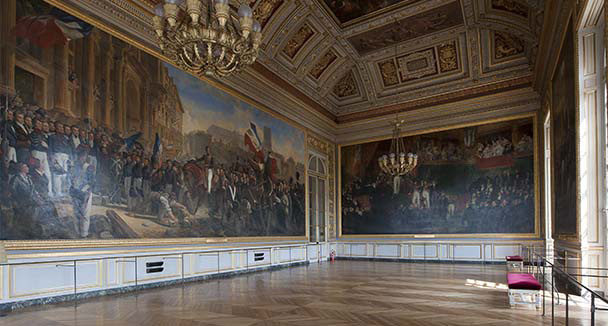
Where are the Louis XIV Rooms?
Louis XIV Rooms give visitors a vast panorama of the 17th century featuring the King, his family, the court and the major political, military and artistic events that marked his reign.

The Louis Xiv's Childhood
After 23 years of marriage to Anne of Austria, Louis XIII finally gained his much-longed-for heir in Louis XIV, who was acclaimed as 'Louis-Dieudonné', or 'Louis, the gift from God'. The portraits in this room depict him as a child, heir to the throne of France, who became king at a very young age.

Early Military Campaigns
Louis XIV was a warrior king for whom victory was a means of cementing his authority. After his marriage to Maria Theresa, daughter of the King of Spain, Louis XIV claimed certain Spanish territories in Flanders, thus triggering what is known as the War of Devolution.

The Académie Royale De Peinture Et De Sculpture
The king called upon the artists of the Académie Royale de Peinture et de Sculpture to illustrate the glory of his kingdom and its ruler. The academy, which was established in 1648 and overhauled in 1660, was a centre of training in and development of aesthetic principles. To be admitted to it, prospective members had to present a 'reception piece', i.e. a work on a given subject.

The Arts At The Start Of His Reign
Ever since 'La Fronde' (the French civil wars between 1640 and 1650 sparked by a double revolt by parliament and the princes who opposed Louis XIV and his family), Louis XIV mistrusted Paris. He therefore set up and oversaw the court at Versailles, where spectacular parties were organised and to which the great artists of the day were invited. In this way, Louis XIV contributed to the advancement of the arts.

The Exercise Of Power
Louis XIV was an absolute monarch. He governed alone and relied on counsellors and ministers, whose role was to carry out royal wishes.

Versailles And Europe
Louis XIV turned France into the leading power in Europe and the world. He expanded the kingdom and furthered the reputation of the country beyond its borders.

At The Turn Of The Reign (The 1690S)
In France, the crown passes from father to son according to primogeniture. Of Louis XIV's six children, only his firstborn survived to adulthood. He was given the title of dauphin. However, the succession to the throne was not completely assured…

The King At War
Louis XIV has been portrayed many times as a war commander. These portraits create an image of him as a great and conquering king, and symbolise the military might of France.

Royal Residences
In 1682, Versailles became the seat of government. As an absolute monarch, Louis XIV increased the number of royal residences as a way of extending his power. His successors and the royal family liked to spend time in these places, far from the Palace, often, simply, to get away from life at court.

The Royal Princesses
A princess royal must, by definition, be a relative of the king. This family relationship may or may not be direct: the term describes both the natural female offspring of Louis XIV and the wives of the crown princes. Élisabeth-Charlotte de Bavière, known as Princess Palatine, is a perfect example.

Where are concerts and shows held?
Depending on the show, the location within the Palace may vary. On the garden level you can see the Royal Chapel. The Royal Opera (not open to self-guided tours) is at the end of the Galerie de Pierre Basse. For further information
The Hercules Salon
The Hercules Room is the last room to have been created under the reign of Louis XIV. Its painted ceiling, which took three years to complete, is the most epic in the Palace of Versailles, featuring 142 different figures.

Hall Of Mirrors
The Hall of Mirrors replaced a large terrace overlooking the garden that was considered too exposed to inclement weather. Its seventeen arches decorated with mirrors face seventeen arched windows, creating a commingling of the interior and exterior. The Hall of Mirrors was a place for both social events and demonstrating the political might of Louis XIV.

Royal Opera
Inaugurated in 1770 for the marriage of the Dauphin, the future Louis XVI, to Marie-Antoinette of Austria, the Royal Opera soon became one of the greatest concert halls in Europe.
These days, concerts, operas and ballets are performed here all year round. More information about performances.
The Royal Opera is accessible as part of a guided tour.

Where are the Apartments of Louis XV’s daughters?
Until June 5, 2022, the entrance to the tour is to the left of the Royal Court to visit the exhibition "Chefs-d’œuvre retrouvé", the apartments of the Dauphin, the apartments of Louis XV’s daughters (including the Hall of Hoquetons) and the apartments of the Captain of the Guards.
The Marble Vestibule
This vestibule is located beneath the King's Bedchamber. It was created in 1679 to connect the Marble Courtyard and the Gardens.
The vestibule features 16 columns and 16 pilasters made from Rance marble on veined white marble.
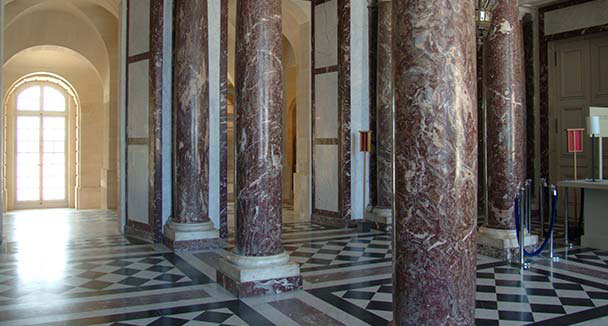
The Lower Gallery
Located just below the Hall of Mirrors, the Lower Hall gives access to the tour of the apartments of Mesdames, the daughters of Louis XV. In this lower gallery, you can admire in close detail those sculptures that were initially housed in the gardens but which have since had to be kept indoors.

Madame Victoire's First Antechamber
The first room in the apartment, this antechamber was the most accessible and served as a waiting room for visitors. With little decoration, it was also used by domestic staff and was furnished with great simplicity: straw chairs, a wardrobe and a cot for a valet, hidden behind a screen.

Madame Victoire's Second Antechamber
This room served for the official presentation of visitors, when a new person entered into the court, for example.

Madame Victoire's Large Chamber
This was originally the location for the octagonal room in Louis XIV's bath chamber. In 1763, the Mesdames demanded that the outmoded décor be replaced by a more elegant design, of which the cornice, the panelling in the angles of the room and the fireplace remain. Blanchet's harpsichord reminds us that Madame Victoire was an admirable player of the instrument, and that Mozart dedicated his first six harpsichord sonatas to her.

Madame Victoire's Bedchamber
In this room, a daily ceremonial would take place in front of a restricted audience, with each of the princess's courtesans playing their role: dressing, hair, jewellery.

Madame Victoire's Interior Chamber
The interior chamber is the smallest of Madame Victoire's official apartments. It was also the only one that offered any real privacy. Entry was only allowed on the princess's express invitation. These days, the room houses furniture from the Mesdames' country residence in Bellevue, and a large flat desk designed by Jean-Henri Riesener for Marie-Antoinette.

Library Of Madame Victoire
Louis XV's daughters liked to read here, either alone or with their 'lectrices'. They had libraries in each of their residences. It seems as if each library featured different coloured bindings: Green leather for Madame Victoire, red for Madame Adélaïde.

Interior Chamber Of Madame Adelaide
Access to Madame Adélaïde's apartment used to be different: through an antechamber at the other end. So the present tour is in reverse.
The room was famous in its day as the red lacquer room of Madame de Pompadour. Louis XV's mistress did indeed occupy what would become Madame Adélaïde's apartment; she died there in 1764. With its grandly refined furniture, the current arrangement of the room reflects the princess's personal taste.

Madame Adelaide's Bedchamber
Madame Adélaïde's bedchamber is a very large room and richly decorated. In the time of Mesdames, there was both a summer and winter décor in the official apartments. Here you can see the summer materials restored.

Madame Adelaide's Large Chamber
The main reception room in the princess's apartment, the large chamber functioned as a music room: The organ at the rear of the alcove possibly belonged to Madame Adélaïde. Music is also evoked in the large portraits of Madame Adélaïde practicing her vocal scales, by Jean-Marc Nattier (1759), and Madame Victoire playing the harp, by Etienne Aubry (1773).

Hoquetons Salon
"Les gardes de la prévôté de l’Hôtel", the internal police force at the Palace, would meet in this room, which is the only room to have retained its décor from its inception in 1672. They were referred to as "Hoquetons", a reference to their tunics, inherited from the archers of the Middle Ages.

Entrance A - Entrance For Individual Visitors
Due to the anti-terrorist security plan, visitors with large baggage items are not admitted on the domain (exceeding 55x35x20 cm).
This entrance provides access to all unaccompanied routes including temporary exhibitions.
To enter the Palace, you must have a ticket with a reserved time slot. Buy your ticket online. Due to the high number of visitors, admission to the palace can only be guaranteed through online booking.
If you are eligible for free admission, you must have booked a free time slot on the online ticketing service.

How do I get to the Grand Apartments?
They are located on the first floor of the Palace. To go there from the garden level, you have to take a stairway located at the end of the History Gallery.
Questel Staircase
The Questel staircase gives access to the first floor from the Gallery of the History of the Palace.
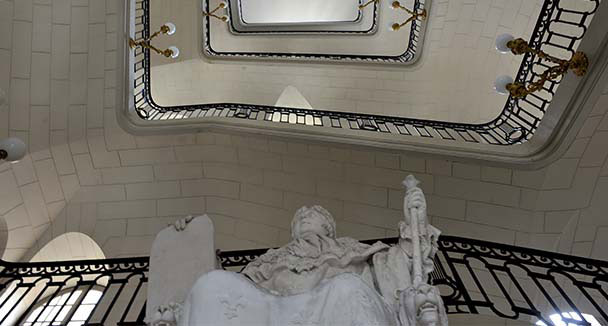
Access Grand Apartments (Hall Of Mirrors, King’s Chamber) - Gl
Visitors arrive at the Grand Apartments through the Gallery of the History of the Palace or the sculpture gallery. By taking this tour, visitors can explore the apartments of the King and Queen of France.

Where are the Dauphine’s apartments?
These ground-floor apartments opened onto the Midi Parterre and were reserved for members of the royal family. Their current layout dates from the period when they were lived in by Louis XV’s son, Louis, Dauphin of France, and his second wife, Maria-Josepha of Saxony, between 1747 and 1765.
The Dauphine's First Antechamber
These apartments were always reserved to the leading members of the royal family. Their current decoration corresponds to the period in which they was occupied by Louis XV's son and his second wife, Maria Josepha of Saxony.

The Dauphine's Second Antechamber
These apartments were always reserved to the leading members of the royal family. Their current decoration corresponds to the period in which they was occupied by Louis XV's son and his second wife, Maria Josepha of Saxony.

The Dauphine's Drawing Room
These apartments were always reserved to the leading members of the royal family. Their current decoration corresponds to the period in which they was occupied by Louis XV's son and his second wife, Maria Josepha of Saxony.

The Dauphine's Bedchamber
These apartments were always reserved to the leading members of the royal family. Their current decoration corresponds to the period in which they was occupied by Louis XV's son and his second wife, Maria Josepha of Saxony.

Where are concerts and shows held?
Depending on the show, the location within the Palace may vary. On the garden level you can see the Royal Chapel. The Royal Opera (not open to self-guided tours) is at the end of the Galerie de Pierre Basse.
Royal Chapel
The construction of the Royal Chapel lasted between 1689 and 1710. Every day, usually in the morning at 10am, the court would assemble for the King's mass.
Every Thursday, an orchestra gives audiences the chance to discover selections the European repertoire from the 17th and 18th centuries.
The Royal Chapel is accessible as part of a guided tour.

Royal Opera
Inaugurated in 1770 for the marriage of the Dauphin, the future Louis XVI, to Marie-Antoinette of Austria, the Royal Opera soon became one of the greatest concert halls in Europe.
These days, concerts, operas and ballets are performed here all year round. More information about performances.
The Royal Opera is accessible as part of a guided tour.






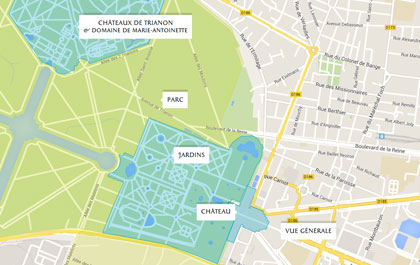
 Optimized for tablets and smartphones
Optimized for tablets and smartphones
